Having left Tende by train, I started to return in the direction of Nice. I have already mentioned that this railway line is called “Train of Marvels” (Train des Merveilles) because of the exceptional engineering and technological skilfulness that were required in order to build this railway at the end of the 19th and the beginning of the 20th centuries. The train passes through beautiful alpine landscapes and in different spots it is possible to see some of the elements that are necessary in order to be able to put a railway line or a road there.
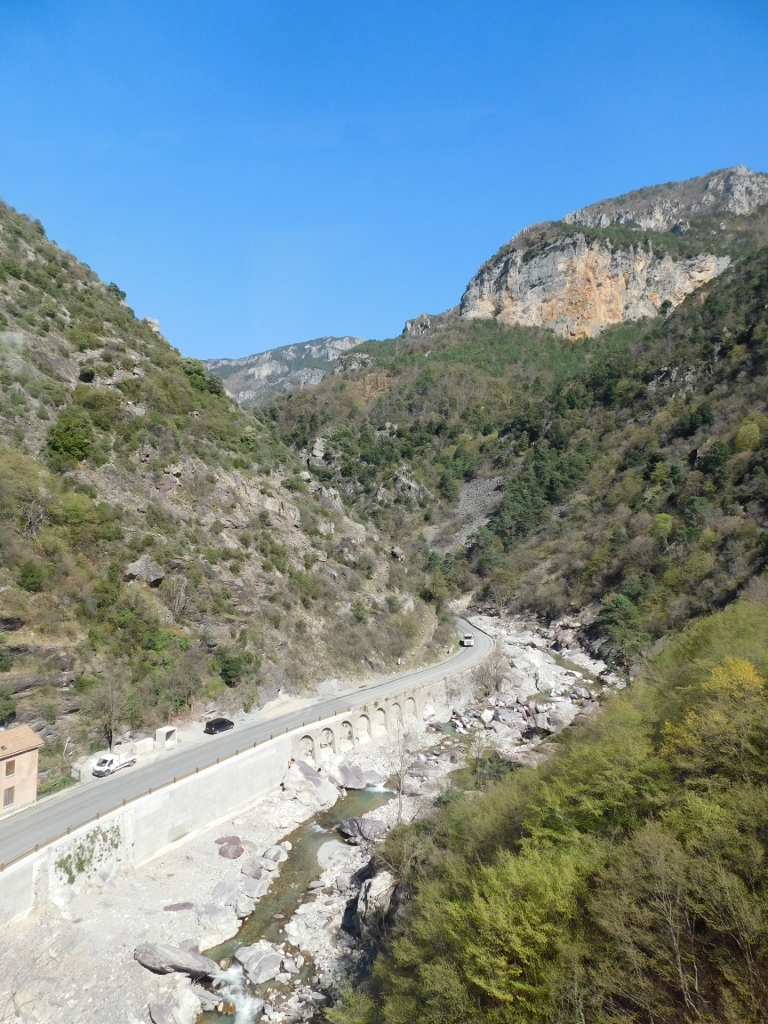 Contemporary road through the valley of the Roya requires a lot of retaining walls
Contemporary road through the valley of the Roya requires a lot of retaining walls
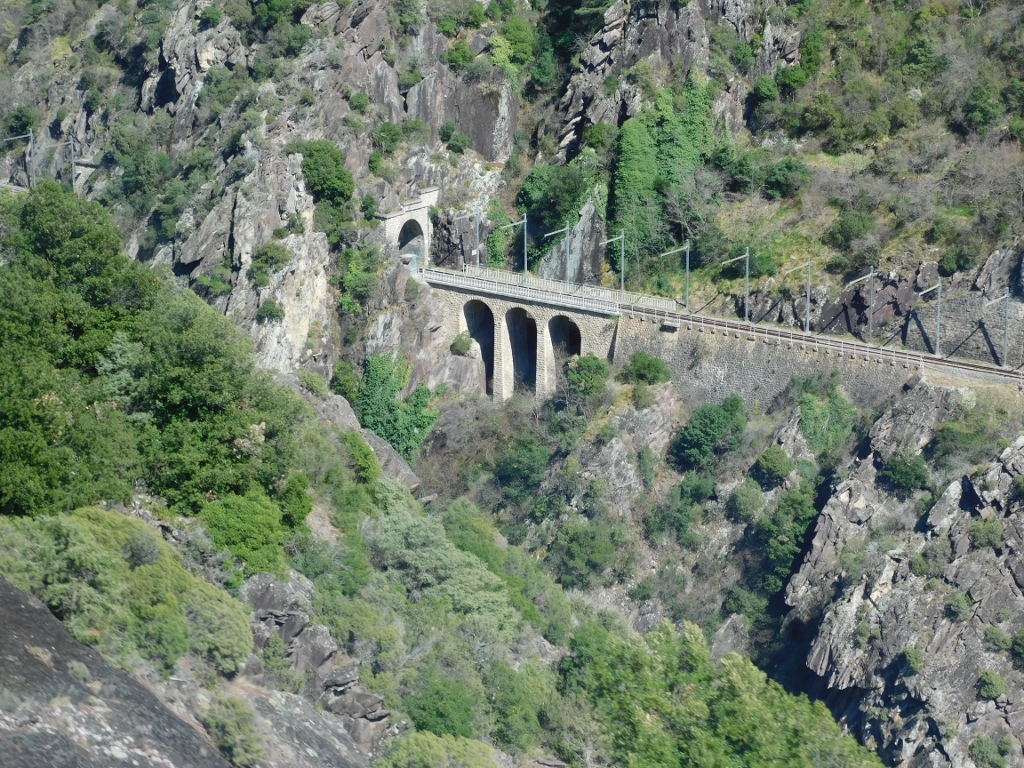 Part of the railway line with a viaduct and a tunnel
Part of the railway line with a viaduct and a tunnel
By the way, I could not claim as certain, but it seems to me that the railway line seen in photo above is the same one as the one I’m on while taking the photo of it, irrespective of the unusual perspective. The reason for such a supposition of mine is the fact that there are a few spiral tunnels along the railway line that allow the train to gain in altitude or descend, depending on the point of view, while moving through the mountain itself. In other words, the tunnels go round and round along a spiral. There are actually two such places from Tende, the place I wrote about in the previous sequel of the travel stories describing my stay in French Riviera at the beginning of April 2022, and the village of Fontan that I am about to mention.
As the train approached Fontan I noted a very picturesque structure near the river and later I found out that this was Le Château de la Causega. The building was constructed a long time ago by a wealthy German industrialist, since he wanted to make some installation here that would use the water from a nearby mountain stream. Nowadays, it is a recreational centre.
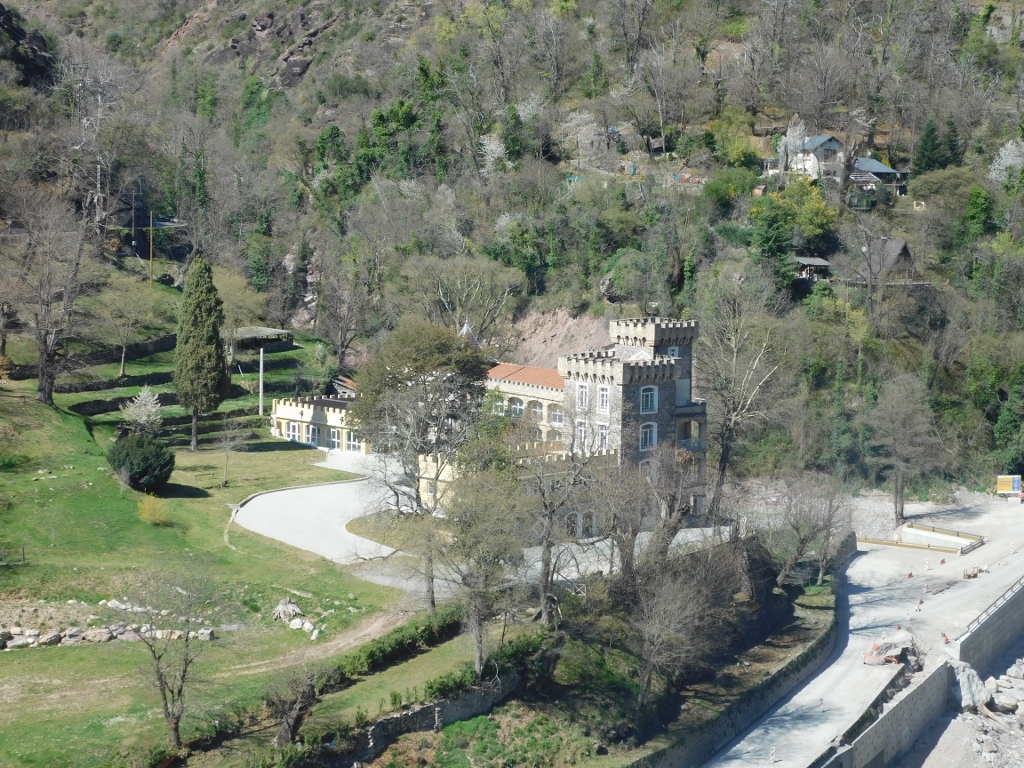 Le Château de la Causega
Le Château de la Causega
Soon we also passed near the centre of Fontan where it was possible to see clearly the tower of the local church.
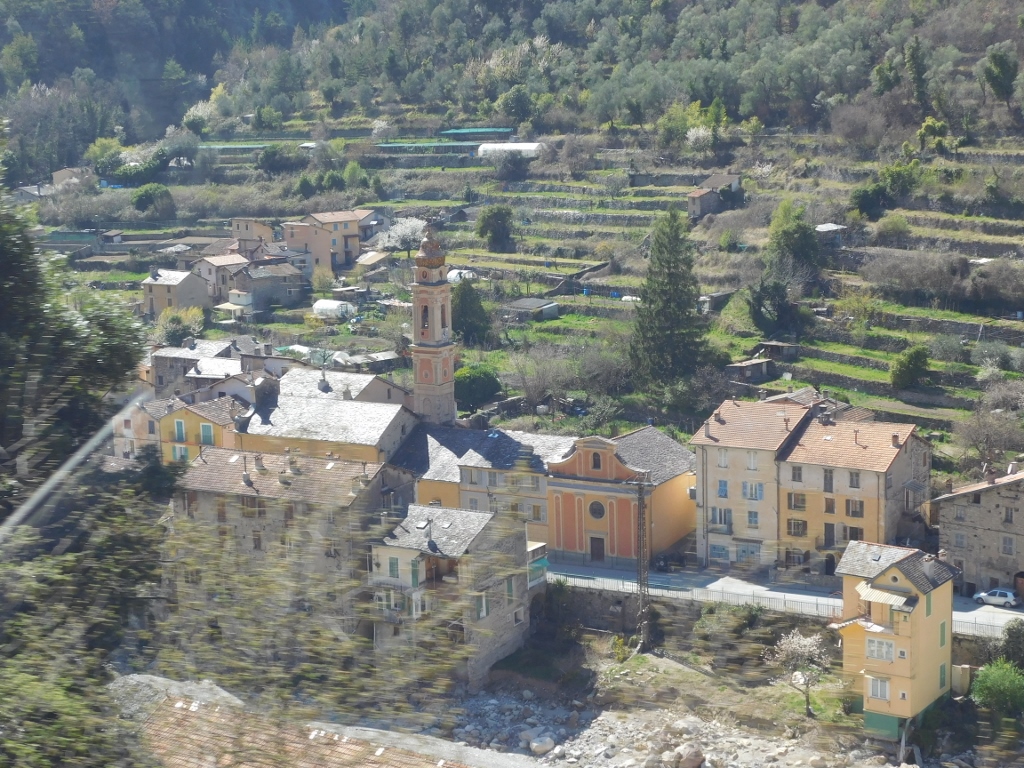 Fontan, a detail
Fontan, a detail
By the way, the railway station in Fontan, which is at the end of the village (coming from Tende) services also a nearby village of Saorge that I could soon see high up in the mountain.
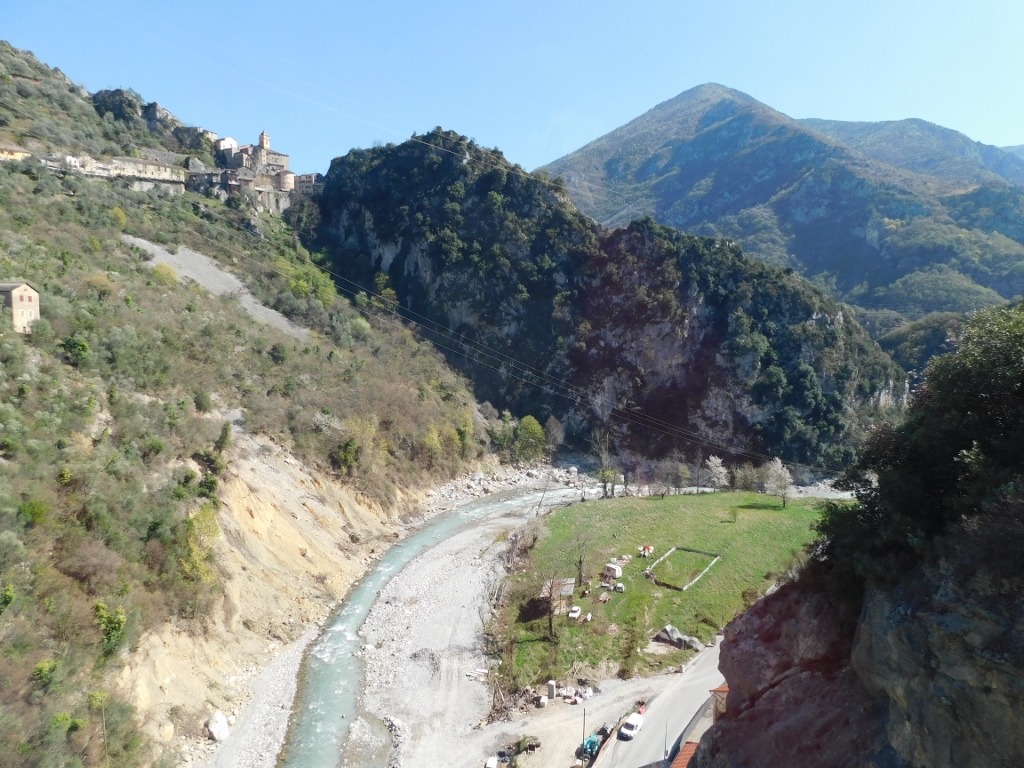 Saorge, before the train enters a tunnel
Saorge, before the train enters a tunnel
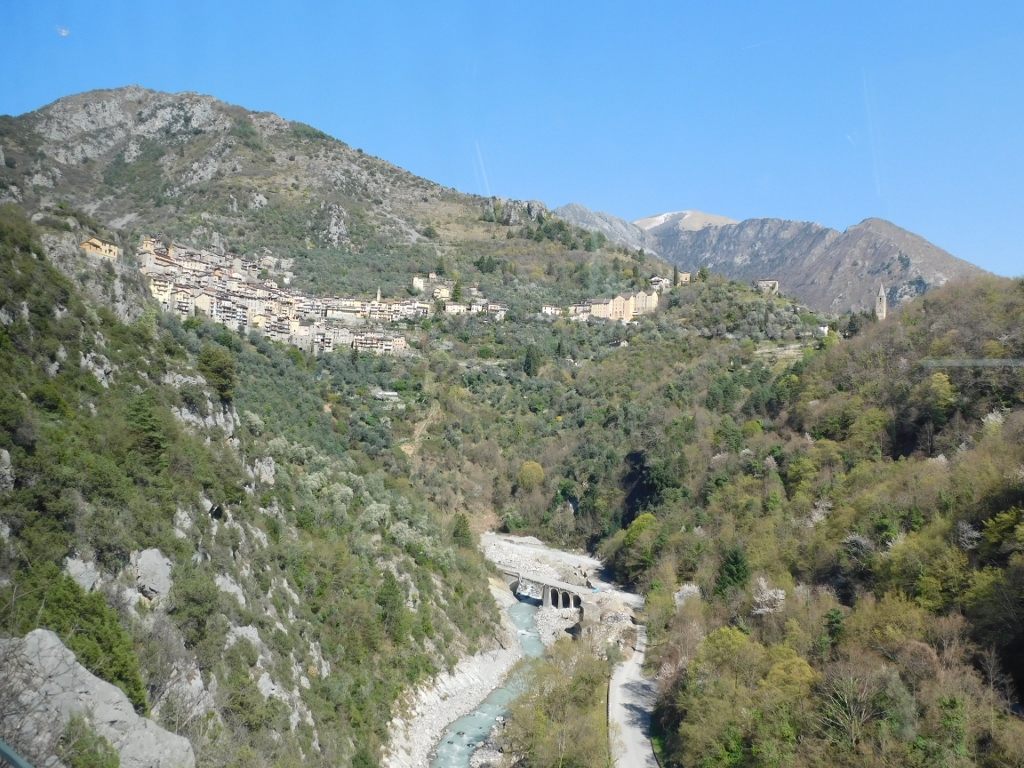 Saorge, after the train exits a tunnel
Saorge, after the train exits a tunnel
Although all of these places seem picturesque, it is impossible to visit them all during a single day (when using the train). So, I opted for another place and that was Breil-sur-Roya. My decision was greatly helped by the map I had obtained at the tourist office in Tende.
I am a sucker for good viewpoints. When such places are marked in a map, it usually means that they have been well verified, so I love to go to such places. Well, this map that I had showed a viewpoint on the same side of the river where the train station was, so I first headed that way and not straight into the town itself.
This allowed me to look at the town and its surroundings somehow from “the side.” By the way, the name of the town means Breil upon the Roya.
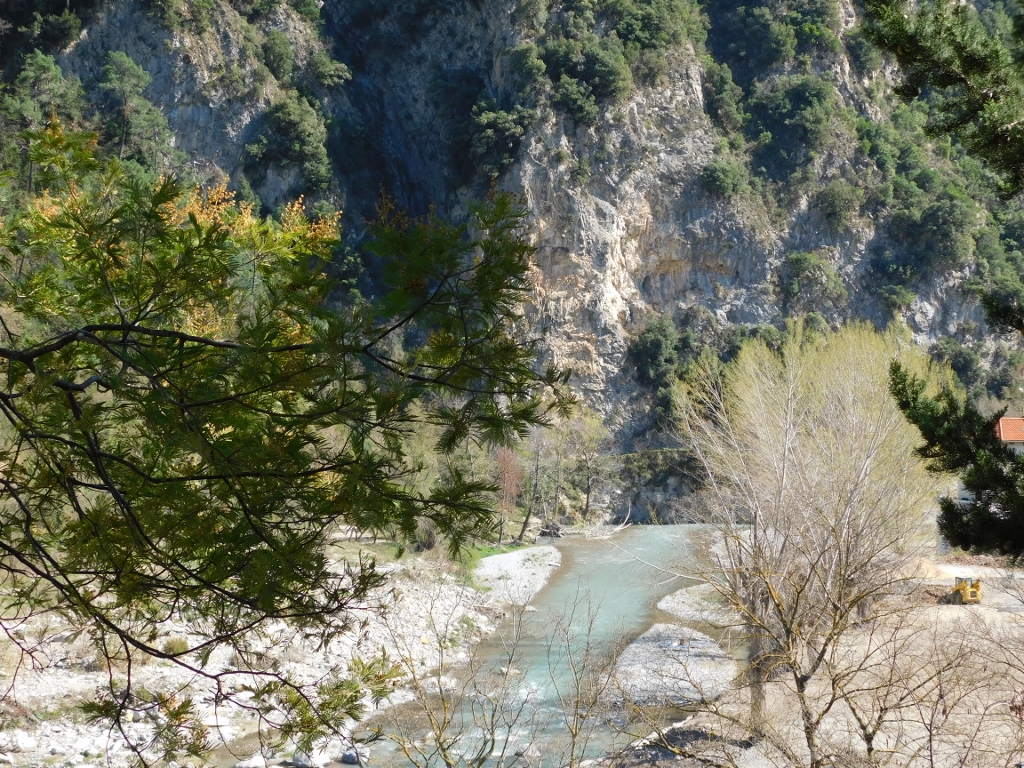 View at the Roya that is flowing into Breil
View at the Roya that is flowing into Breil
First I followed a proper street and then I moved onto a pedestrian path.
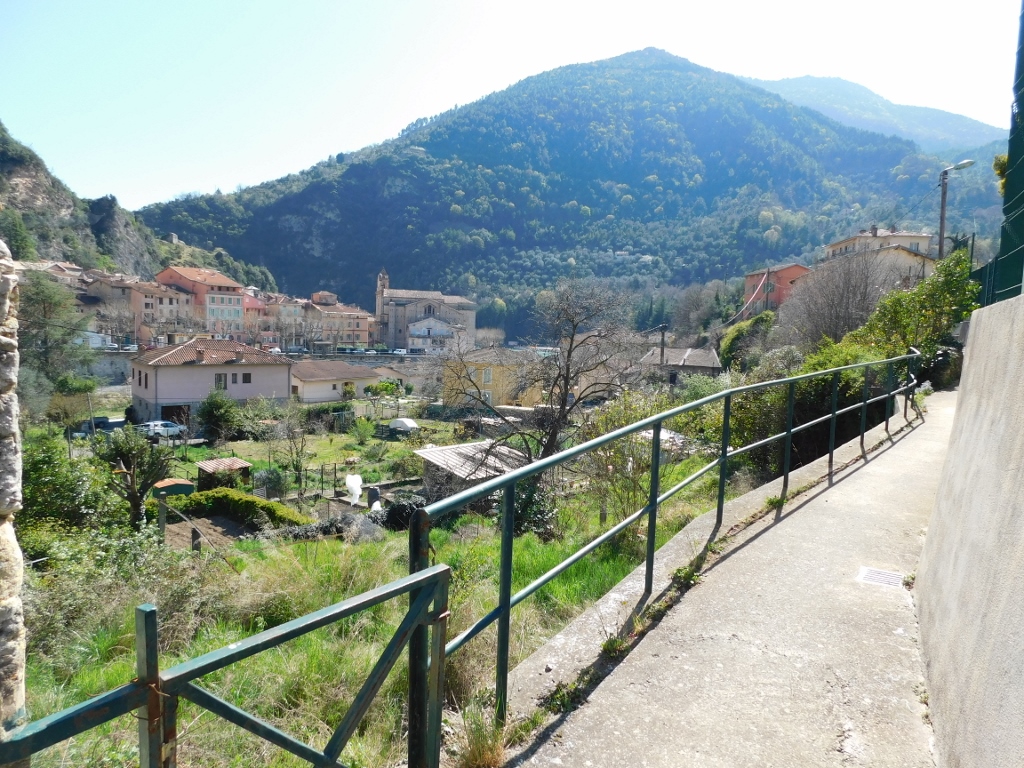 View at Breil-sur-Roya from the path
View at Breil-sur-Roya from the path
The topography of the place is very interesting. The Roya river flows between two mountains and in one place it makes a large, sharp curve, like a hairpin. The elevation enwrapped by that sharp curve is rather steep and on its top there is a fortified tower, La Cruella, built by the Counts of Ventimiglia. I only glanced at it, took a photo and moved on. Taking into account all the walking of the previous day, as well as of the current day, by this time I was quite tired, but I was driven by the desire to see as much as possible. Still, I was quite content to see only those places that were a little lower and that were more easily accessible.
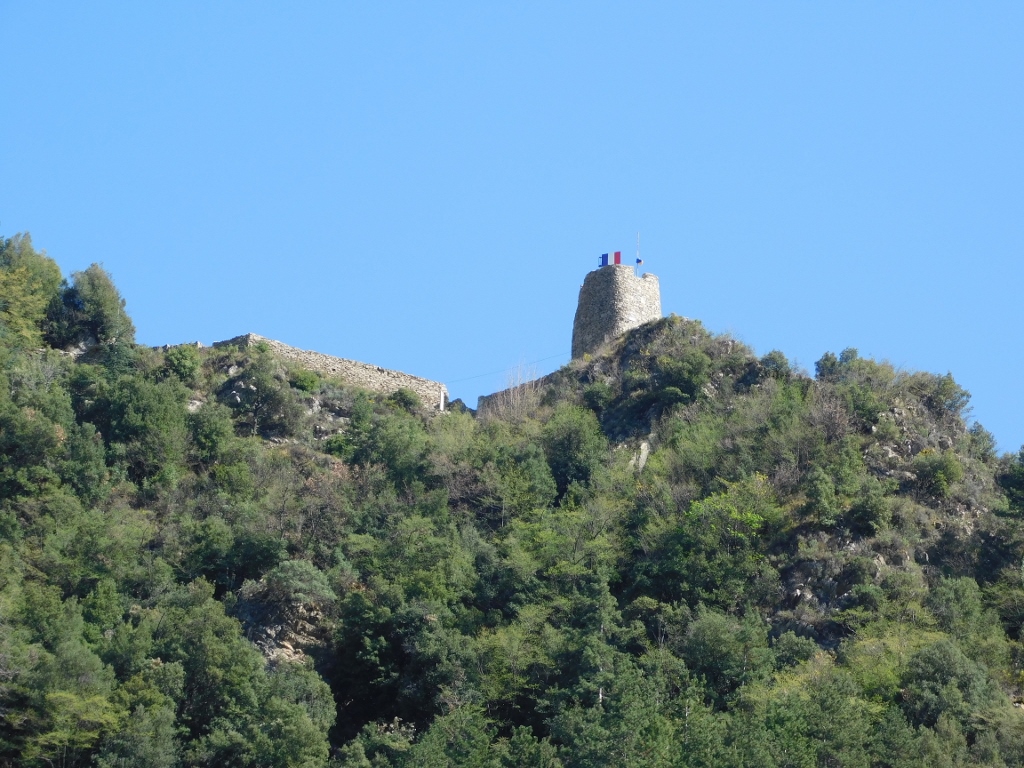 View at the fortified tower
View at the fortified tower
Let me say something else about the topography of Breil-sur-Roya. At the foot of the elevation with the tower, right where the Roya starts with this sharp curve, there is a wide plateau and this is precisely the site where the town has been built.
 Breil-sur-Roya
Breil-sur-Roya
One of the most striking buildings is the imposing Church of Santa-Maria in Albis.
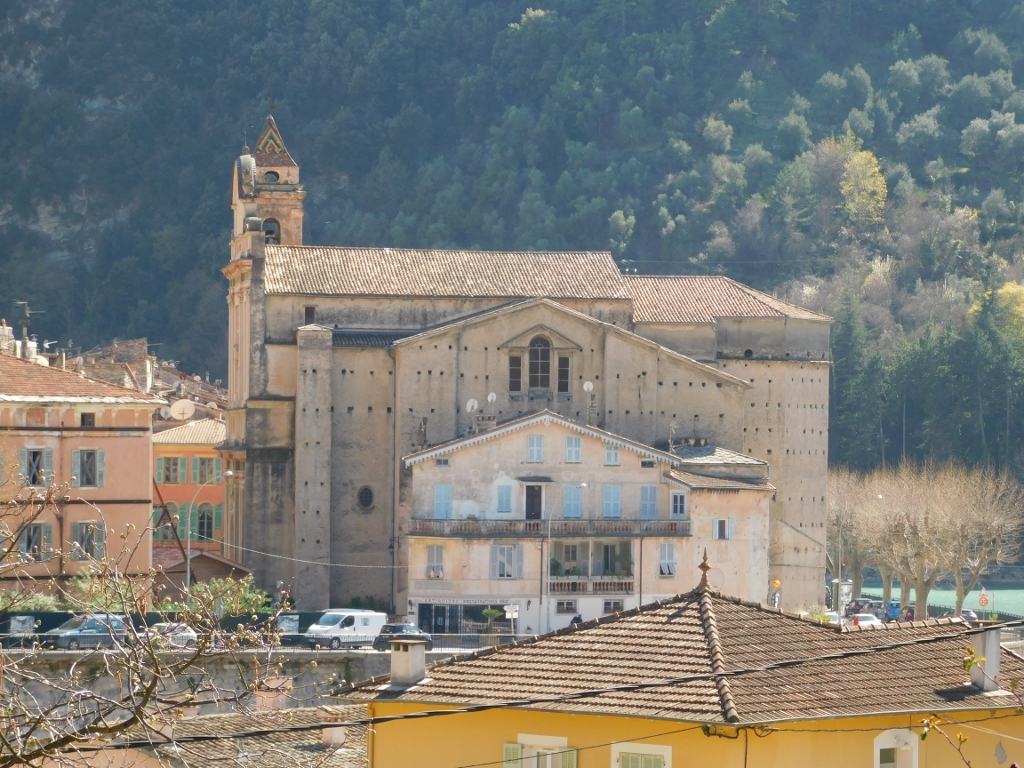 Santa-Maria in Albis Church
Santa-Maria in Albis Church
Walking along the pedestrian path, I could also see some other parts of Breil-sur-Roya, such as Sainte-Catherine Chapel.
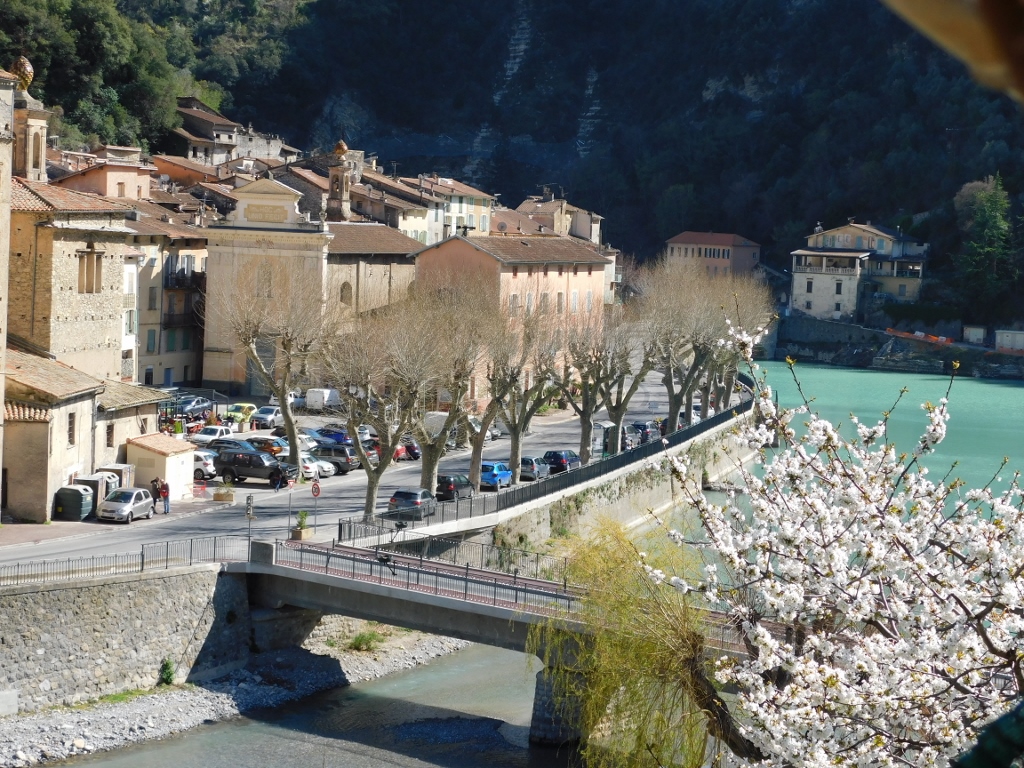 Breil-sur-Roya, to the left and up there is the front facade of Sainte-Catherine Chapel
Breil-sur-Roya, to the left and up there is the front facade of Sainte-Catherine Chapel
Still, I had my planned route and it first entailed a walk following various paths and trails, and only afterwards the visit to the town.
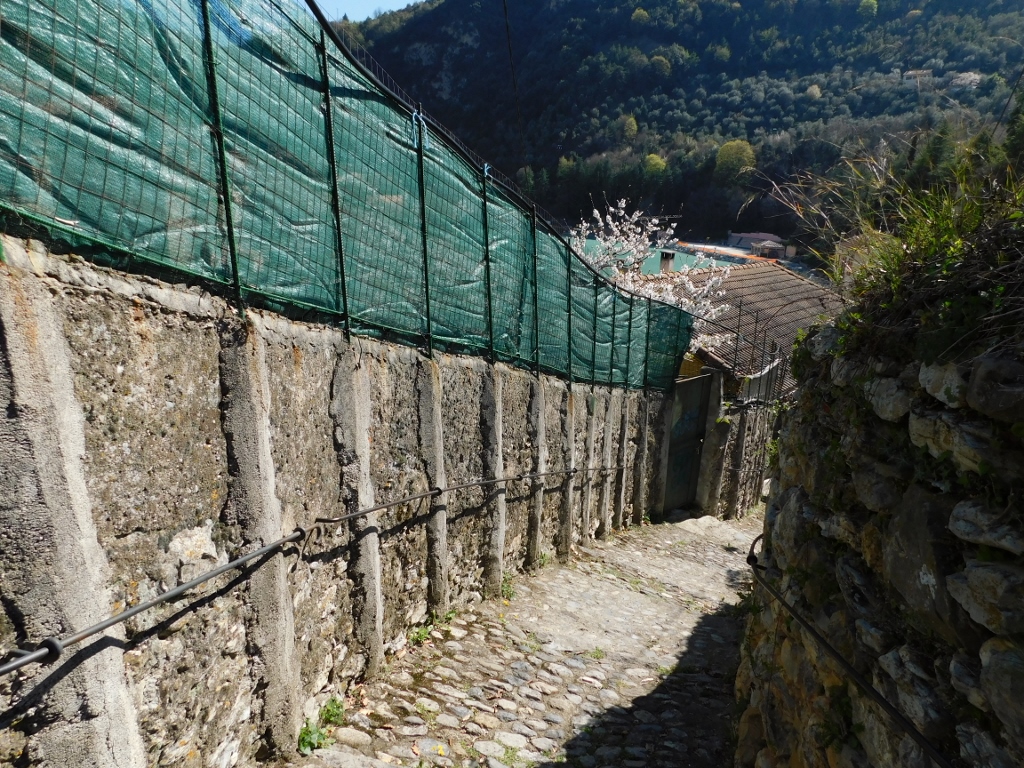 Local path
Local path
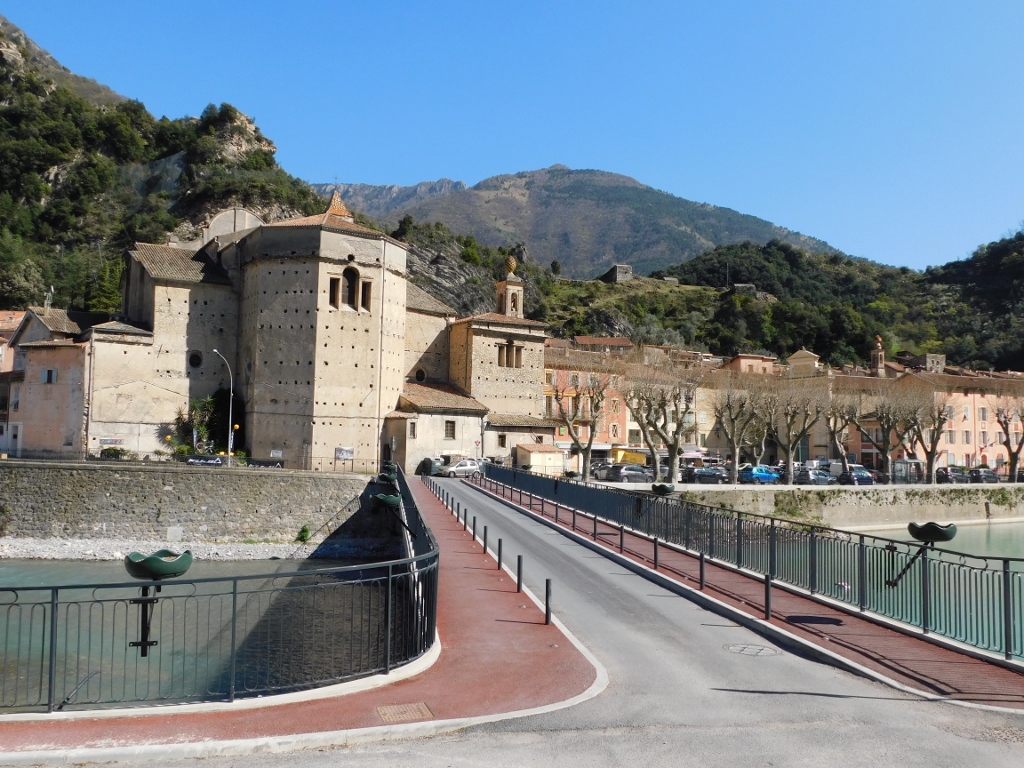 So close and yet so far: for the time being I’m ignoring the centre of this small town
So close and yet so far: for the time being I’m ignoring the centre of this small town
The Roya river makes a small reservoir on account of a hydro-electric plant that I would pass by a little later, so the river gains in width and appears completely incredible with its colour, which I believe is the result of the snows thawing high up in the Alps, but for the time being I left this till later as well.
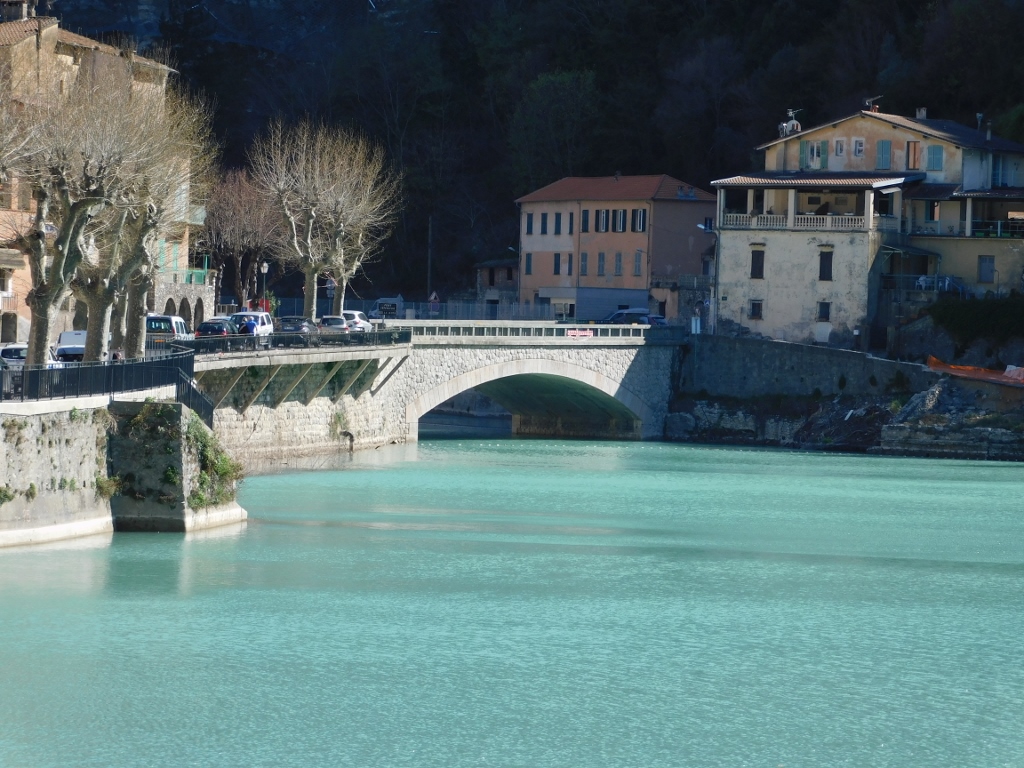 The Roya river
The Roya river
Namely, my intention was to go first to a viewpoint that I saw on the map and that was quite close to the town. I thought that this would be a good way to start with my visit to the place, although I knew I would not have a lot of time. As it would turn out, that concrete viewpoint was not good at all, but I was not sorry that I followed this route, since in this way I visited some parts of this small town that were completely outside the tourist routes. Admittedly, there was no reason to worry about this aspect: I think that on this afternoon I was the only visitor who came here by train.
So, I reached the bridge over the Roya by crossing a pedestrian bridge. In the photo below, this is the bridge with a blue fence that can be seen in the foreground. From there I first got down to the river in order to take some photos (like the previous two) and then I decided to follow a local road, go up and get to the place where that supposedly good viewpoint was located.
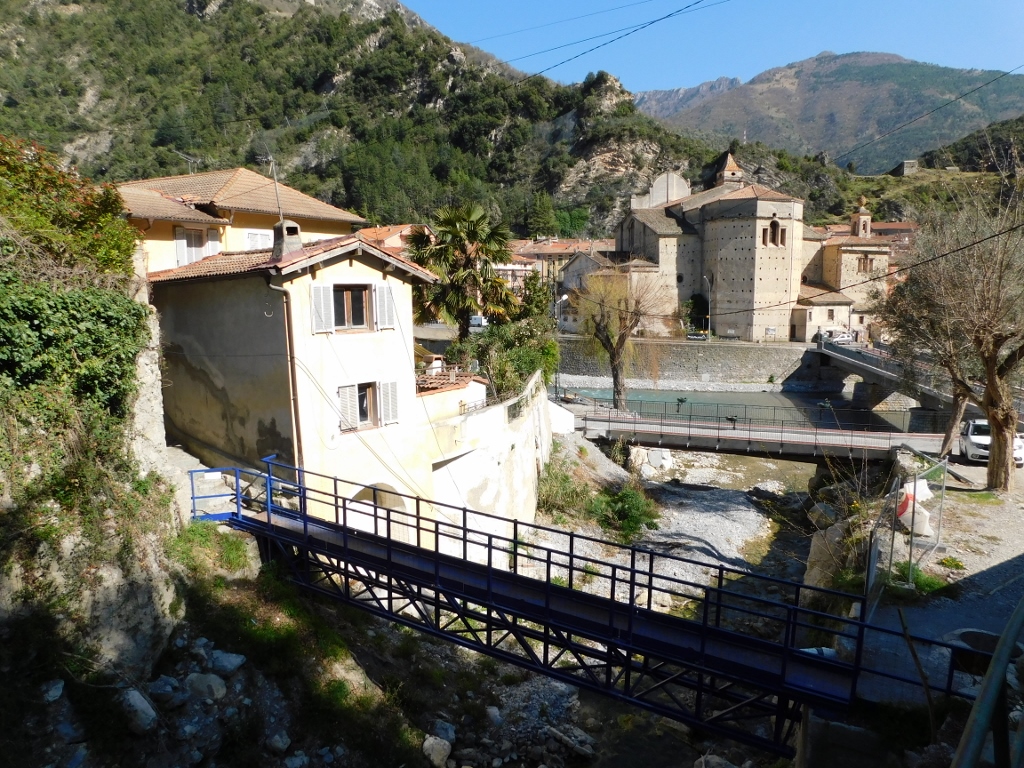 Breil-sur-Roya, a detail
Breil-sur-Roya, a detail
The map placed that viewpoint near the railway track, but nothing could be seen from there. It is possible that this is caused by the trees that have grown in the period after the map was originally made. So, I followed the road to get to an even higher position and from there I could see the “viewpoint,” as well as Breil-sur-Roya and its surroundings.
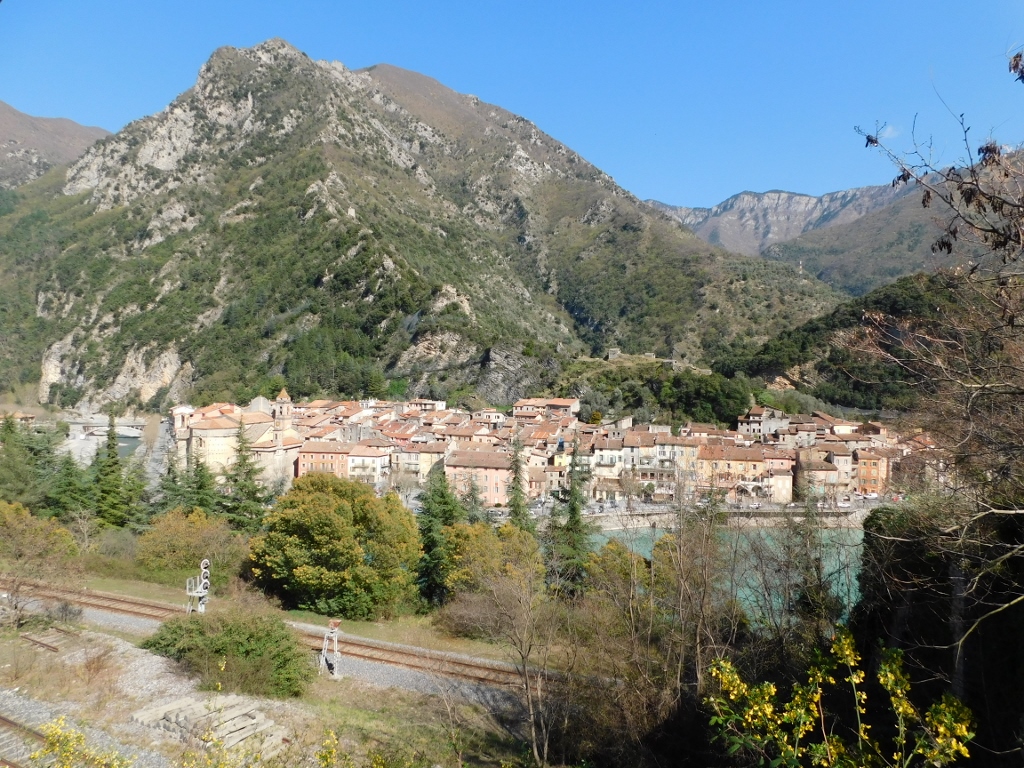 View at Breil-sur-Roya
View at Breil-sur-Roya
When I got here, however, I decided not to return to the town following the same route, but to continue along a trail through nature, which would allow me to approach Breil from a completely different side.
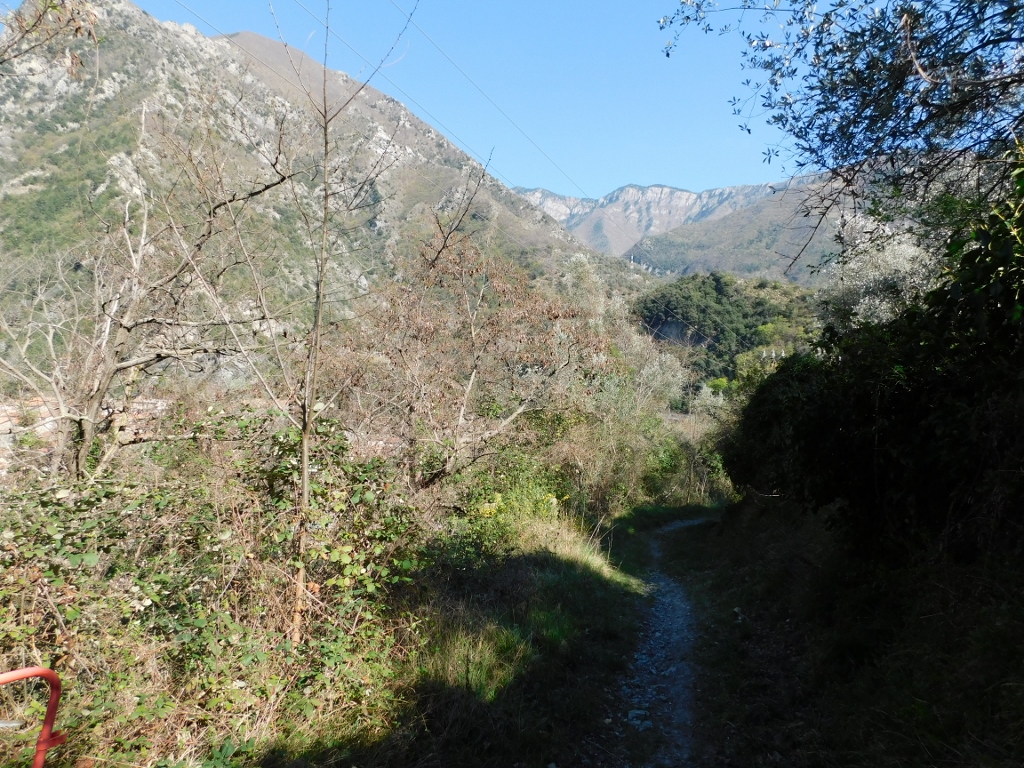 Finally I’m walking through nature
Finally I’m walking through nature
This was an absolutely right decision, because occasionally I had a lovely view at Breil from this trail. The following photo shows quite nicely both the place and the reservoir created beside the town.
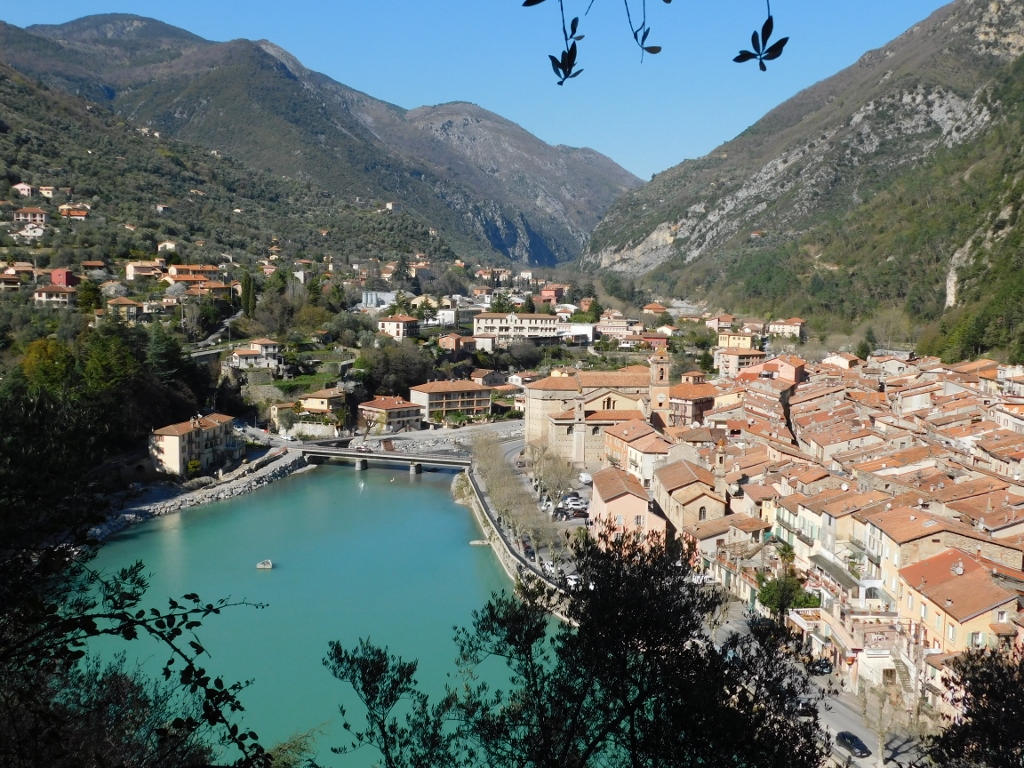 Breil-sur-Roya
Breil-sur-Roya
At some point I had to leave the main trail and descend down a zigzagging steep trail that led to the riverbank and a bridge that is there. Along the way, I could often truly enjoy the beauty of the entire landscape in which this lovely town was taking the central stage.
 Breil-sur-Roya
Breil-sur-Roya
 Beside the small reservoir created by the Roya; the bridge that crosses the river and leads to the town is to the right
Beside the small reservoir created by the Roya; the bridge that crosses the river and leads to the town is to the right
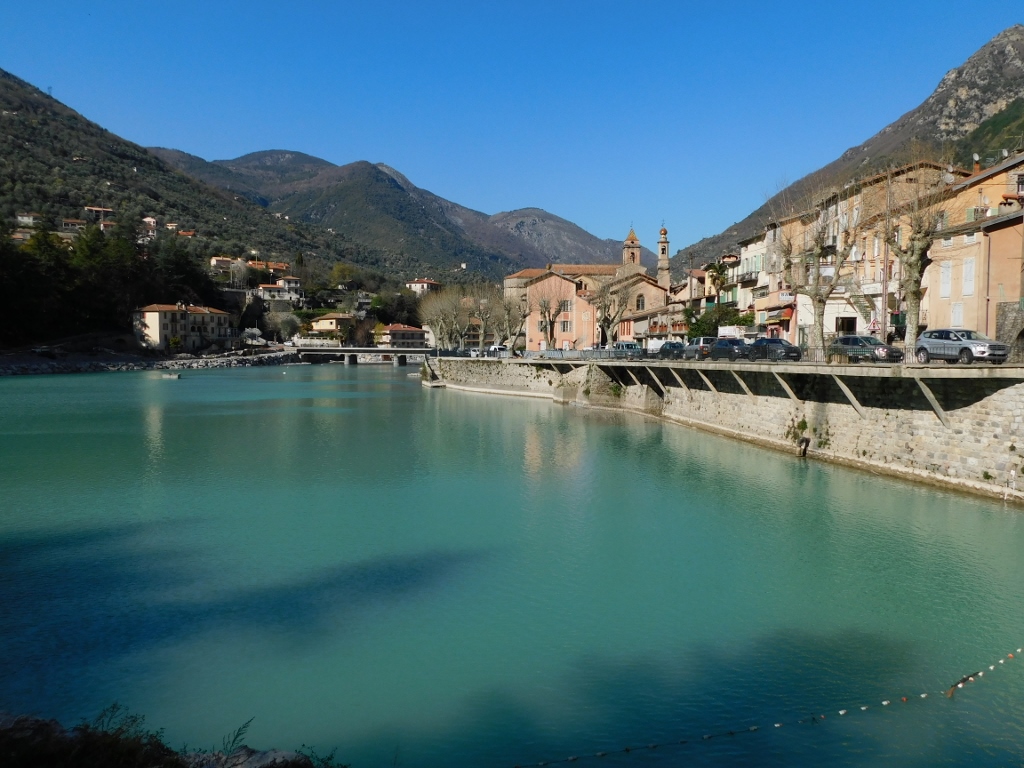 The Roya reservoir
The Roya reservoir
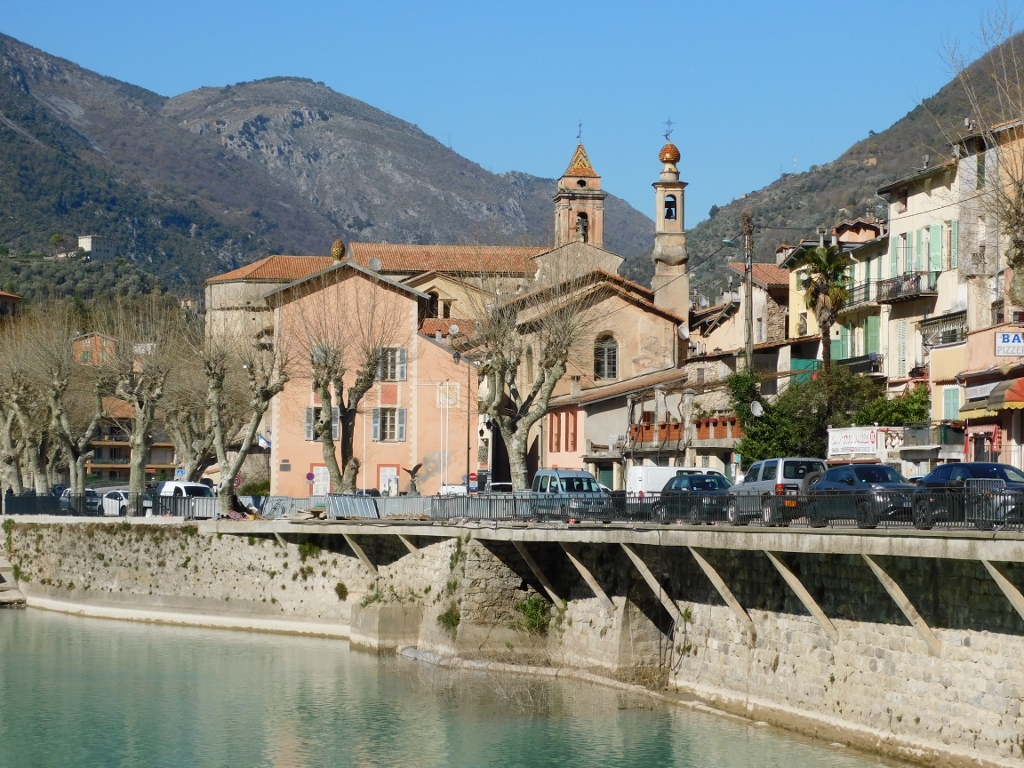 View towards the centre
View towards the centre
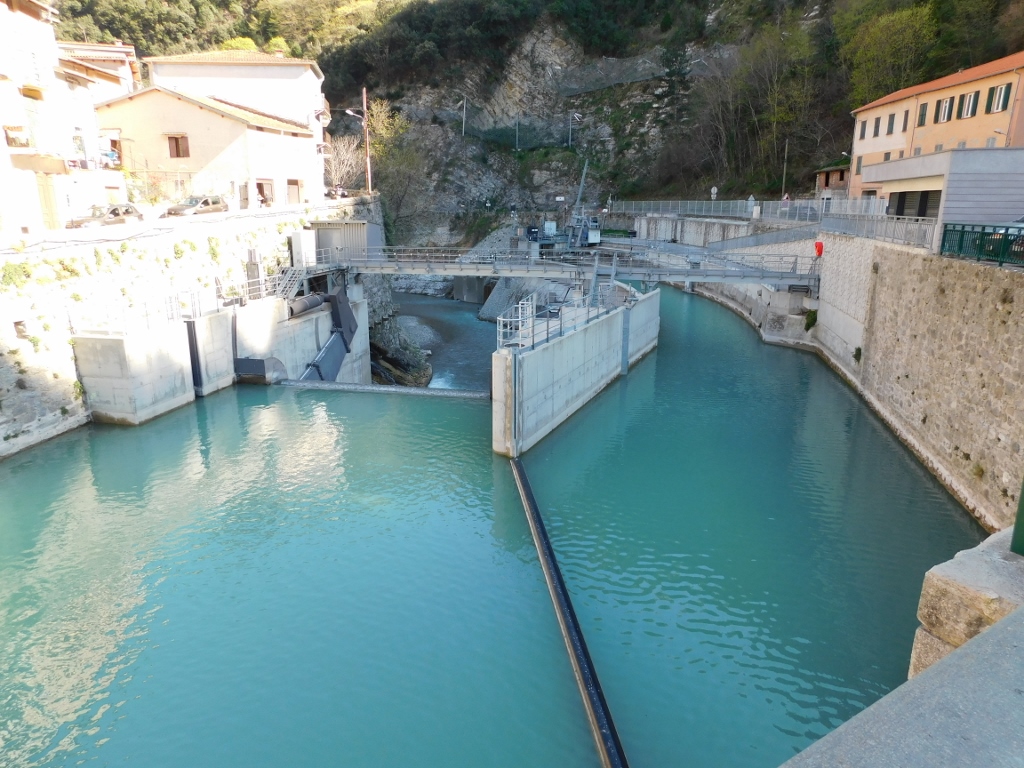 Hydro-electric plant on the other side of the bridge
Hydro-electric plant on the other side of the bridge
As soon as I crossed this bridge, I was in the town and there I went right away for a walk along Pasteur Street, i.e., La Rue Pasteur. Firstly, this street runs along the middle of the town, parallel to the river, so my plan was to reach the centre later walking by the river itself. In this way I would see all that I was interested in. On the other hand, according to what I had read, this street contains several houses from the 17th and the 18th centuries. Yet, I must admit that I was not actively searching for the specific houses, but rather I truly enjoyed in this narrow street with (for me) numerous picturesque buildings. I did not care at all when they were built.
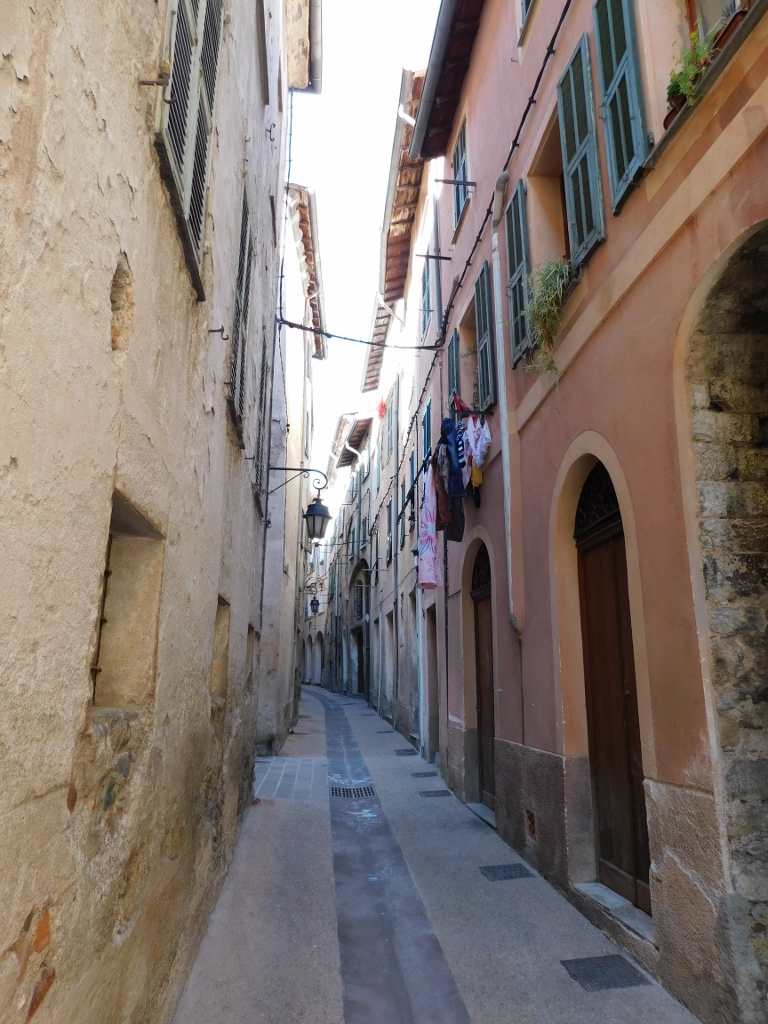 La Rue Pasteur
La Rue Pasteur
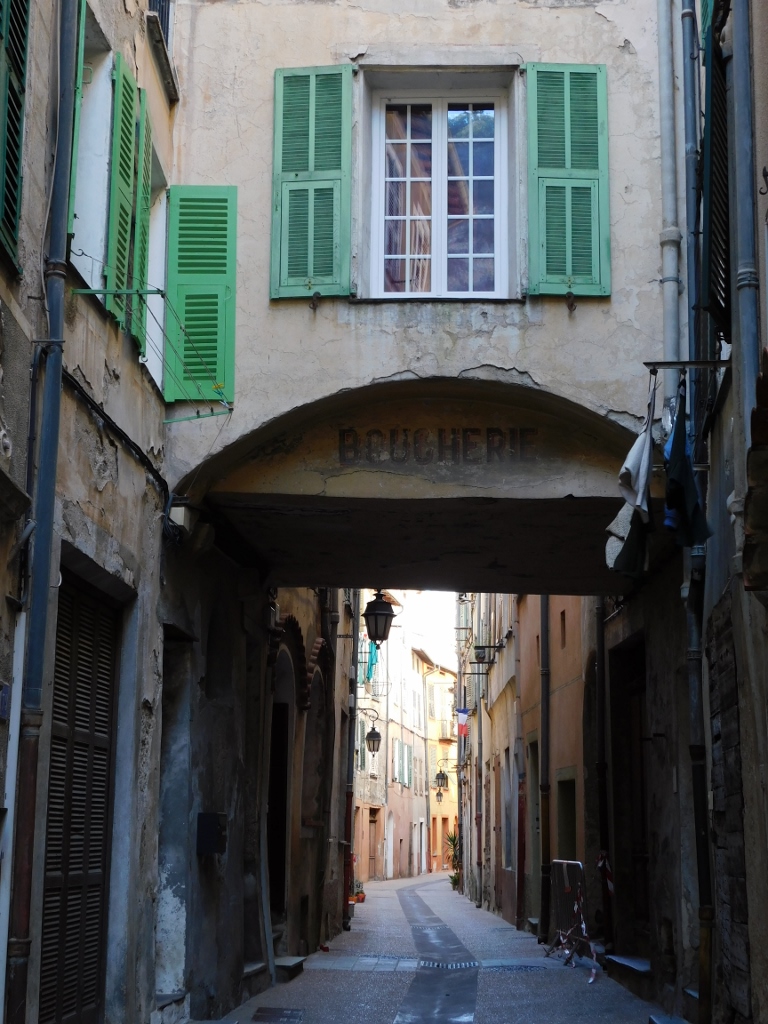 La Rue Pasteur
La Rue Pasteur
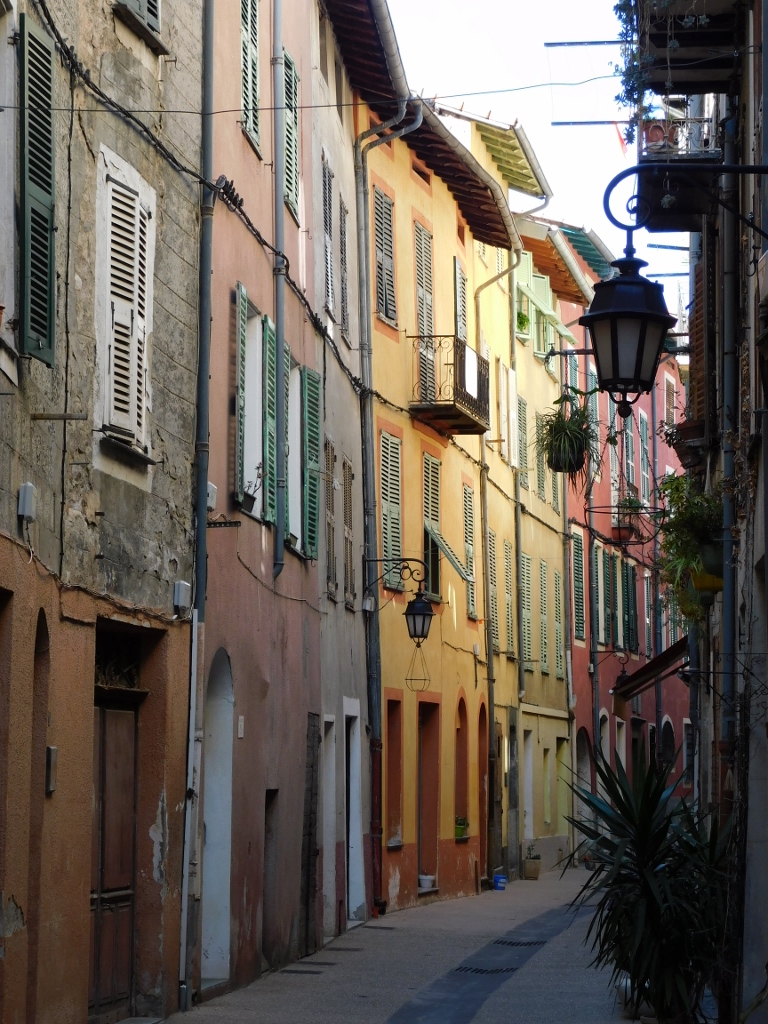 La Rue Pasteur
La Rue Pasteur
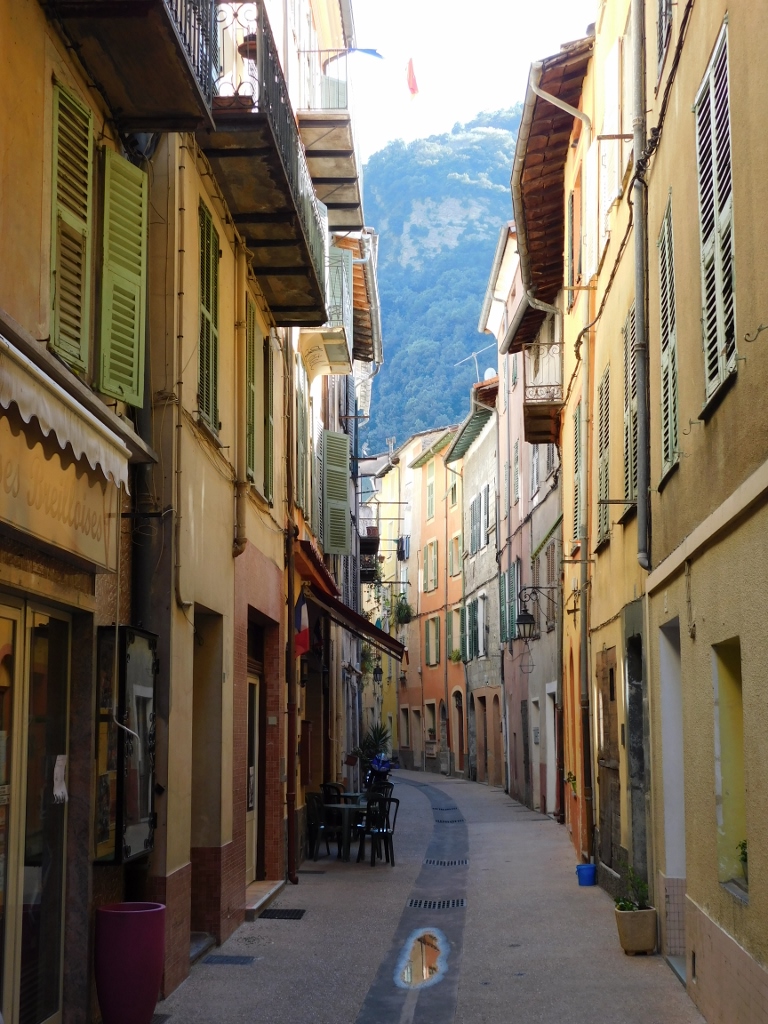 La Rue Pasteur
La Rue Pasteur
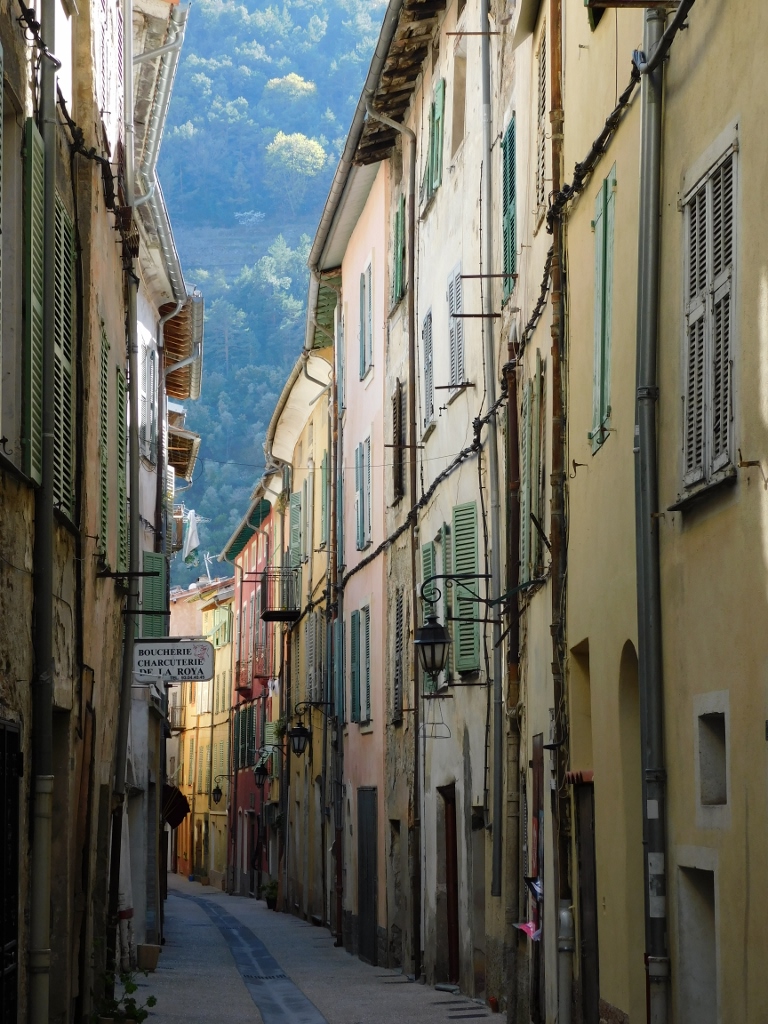 La Rue Pasteur
La Rue Pasteur
At some point, I decided not to go to the very end of the street and following a side passage I got to the riverbank.
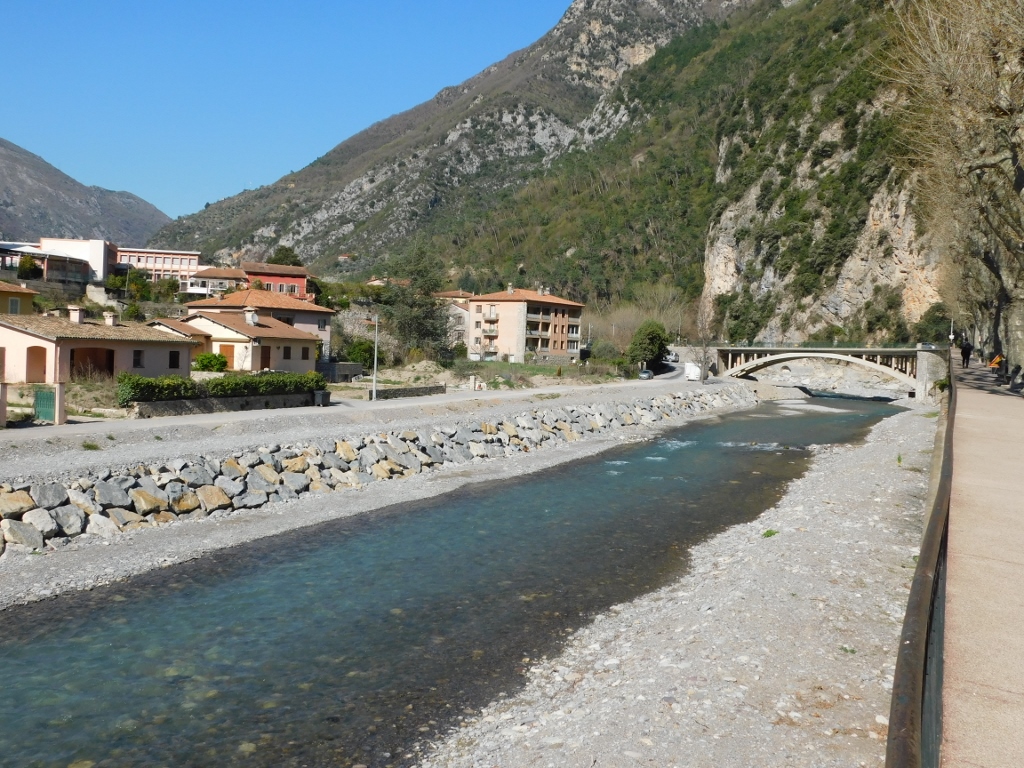 The Roya
The Roya
From there I soon got to the Church of Santa-Maria in Albis (Santa-Maria-in-Albis). The church is situated in a narrow street and for this reason it is impossible to take a good photo of its front facade from the space that exists in front of the church.
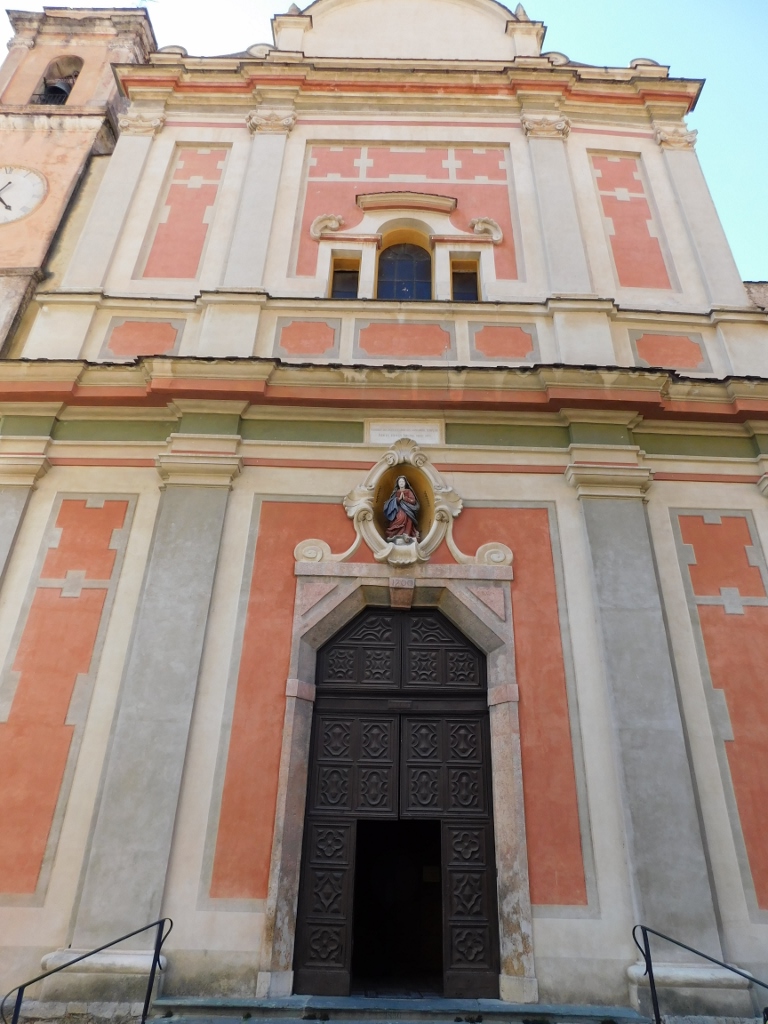 Santa-Maria in Albis church
Santa-Maria in Albis church
This Baroque church, that has been declared a historical monument, is dedicated to the protector of Breil and it was built in the period from 1633 to 1699 at the site previously taken by a Romanesque church, while being inspired by Byzantine architecture (this actually refers to its ground plan). The Baroque decoration of its interior was carried out during the 18th and the 19th centuries. Inside, there are organs from the 18th century that are also considered a historical monument. The church also includes a bell-tower built in 1832-33 around the original Romanesque bell-tower.
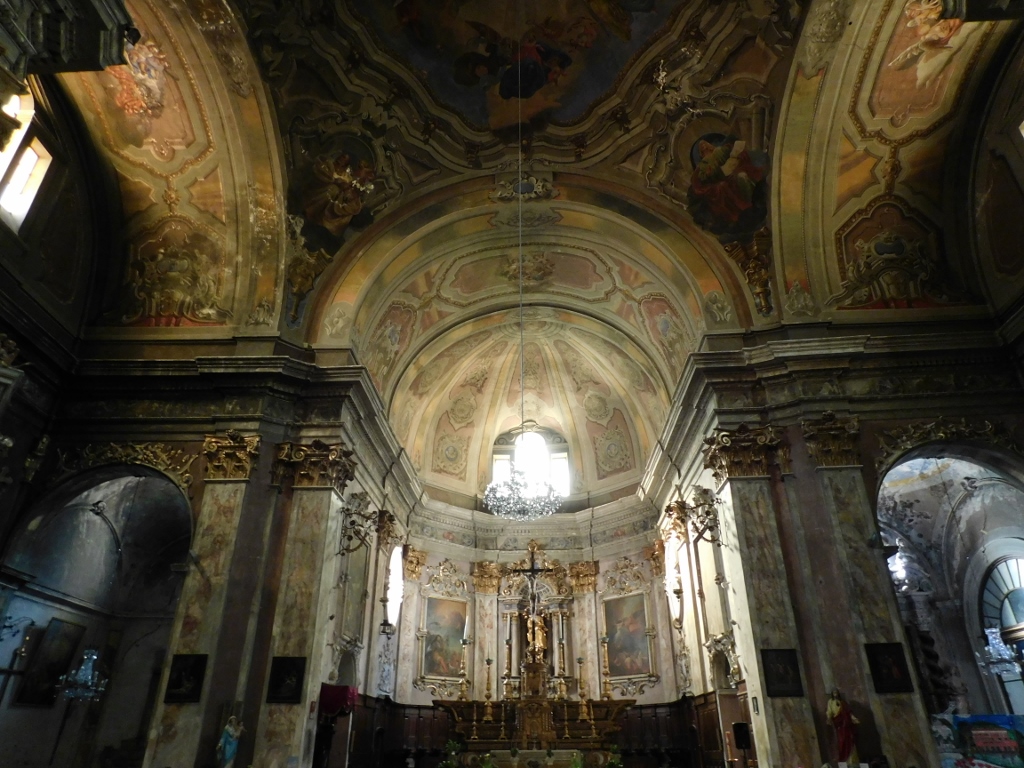 Santa-Maria in Albis church, the interior
Santa-Maria in Albis church, the interior
Right adjacent to Santa-Maria in Albis church, there is the Baroque Chapel of Mercy (Chapelle de la Miséricorde) from the 17th century. It served a as the chapel of the Black Penitents. Although I had read somewhere that it had fine Baroque interior decoration, I could not see this for myself, since the chapel was closed at the time when I was passing by.
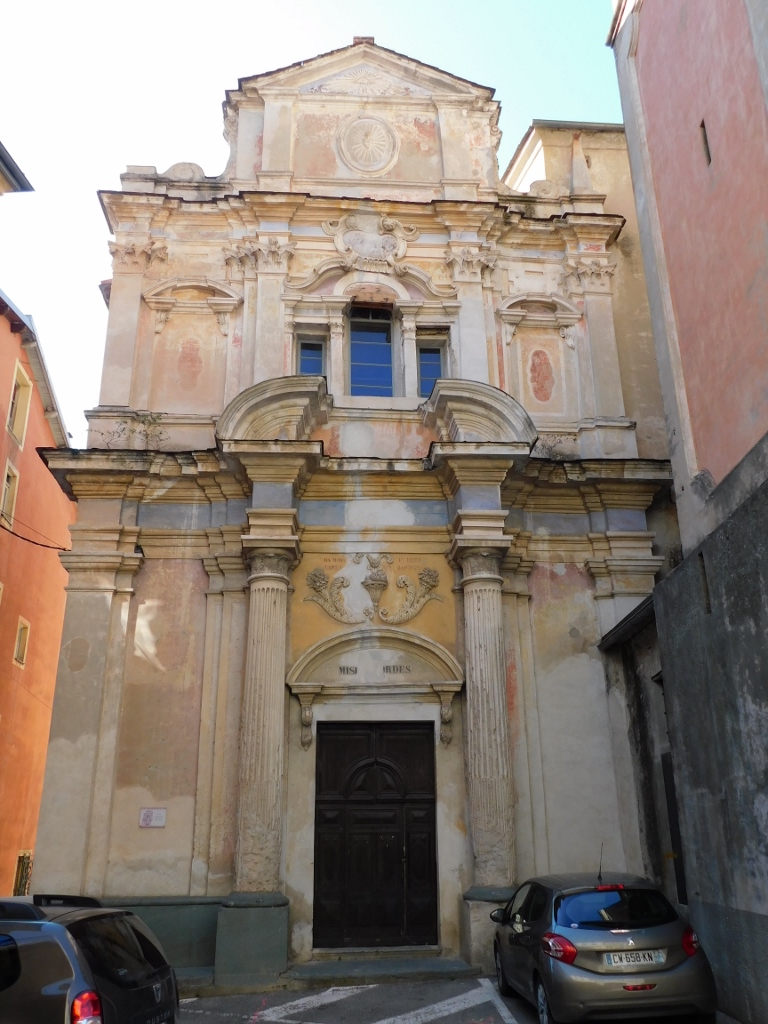 Chapel of Mercy
Chapel of Mercy
Then I went along the lane beside the chapel and so I reached a square from which I could see the side facade of the chapel, as well as the picturesque bell-towers both of the chapel and of the church.
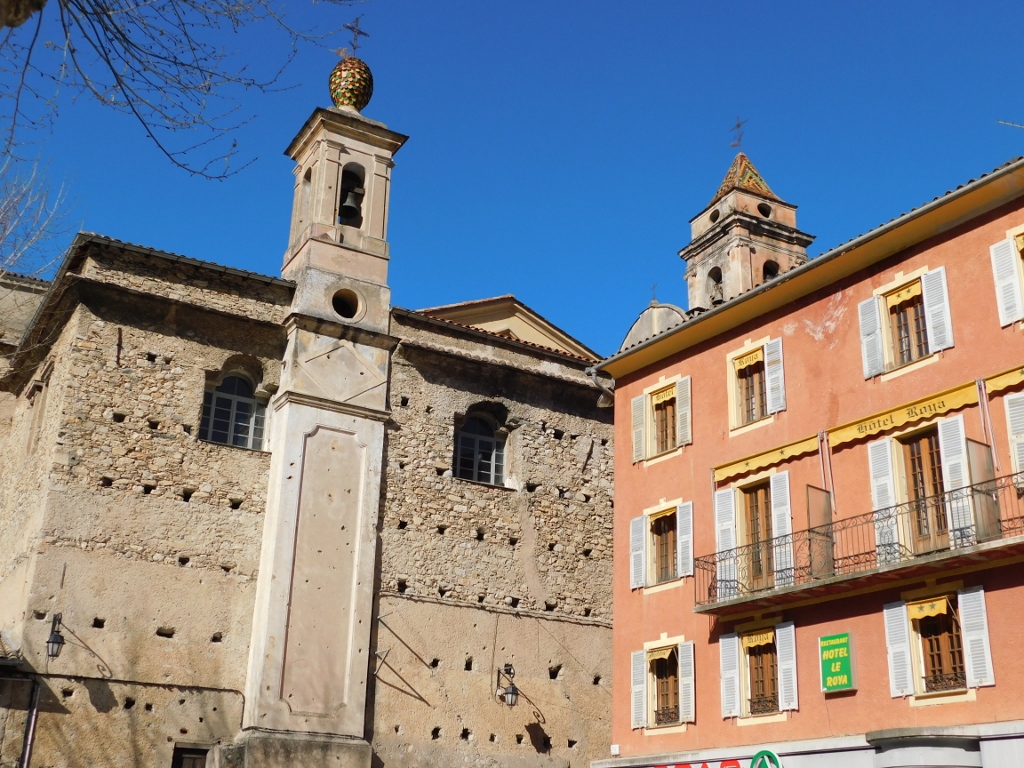 Chapel of Mercy is in the foreground, to the left, while the bell-tower of Santa-Maria in Albis is in the back
Chapel of Mercy is in the foreground, to the left, while the bell-tower of Santa-Maria in Albis is in the back
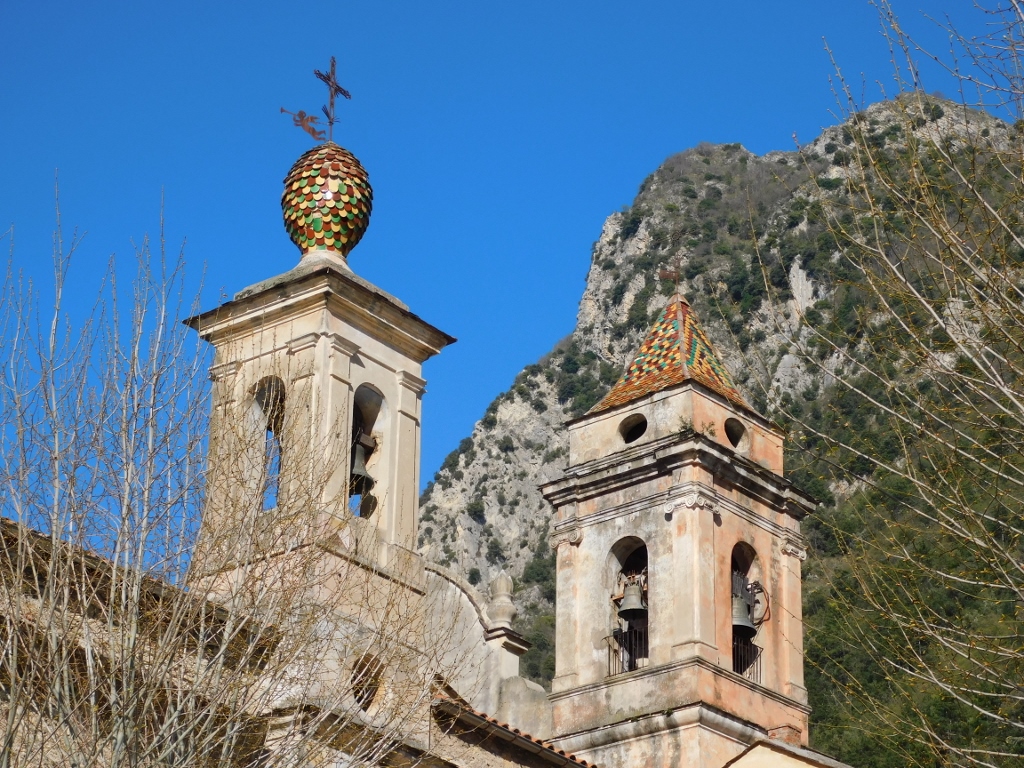 Bell-tower of the chapel is to the left and the bell-tower of the church is to the right
Bell-tower of the chapel is to the left and the bell-tower of the church is to the right
At this L-shaped square I found a café and so I sat there in order to refresh a little. This was right opposite Saint Catherine Chapel (Sainte-Catherine Chapel).
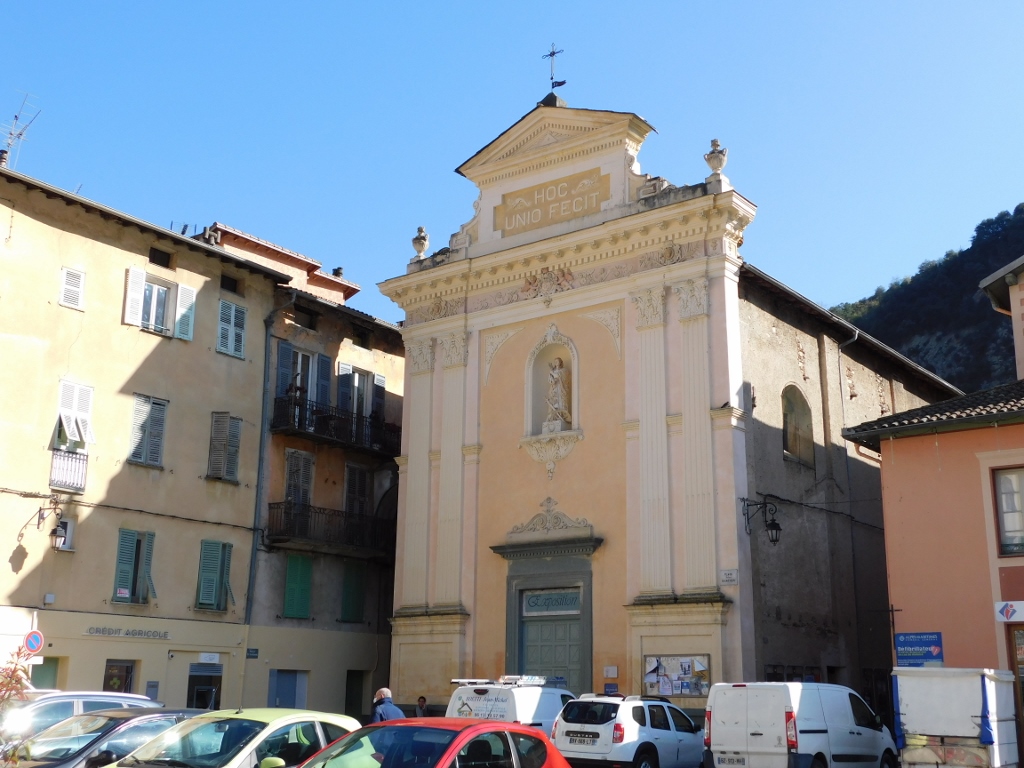 Saint Catherine Chapel
Saint Catherine Chapel
Saint Catherine Chapel was built in the 17th century thanks to the development of the town that was on the road that connected Nice on the seacoast and the region of Piedmont. Back in the day, this was the chapel of the White Penitents. As a reminder, both the Black Penitents and the White Penitents are confraternities within the Catholic Church. However, this church was closed as such in 1985 and today the venue is used for exhibitions.
Still, its front facade is nicely maintained and this church also has a bell-tower the top of which is decorated by a pyriform bulb covered in colourful glazed tiles. On the very top, in addition to the cross, one can also see a weathervane in the shape of an angel blowing a trumpet.
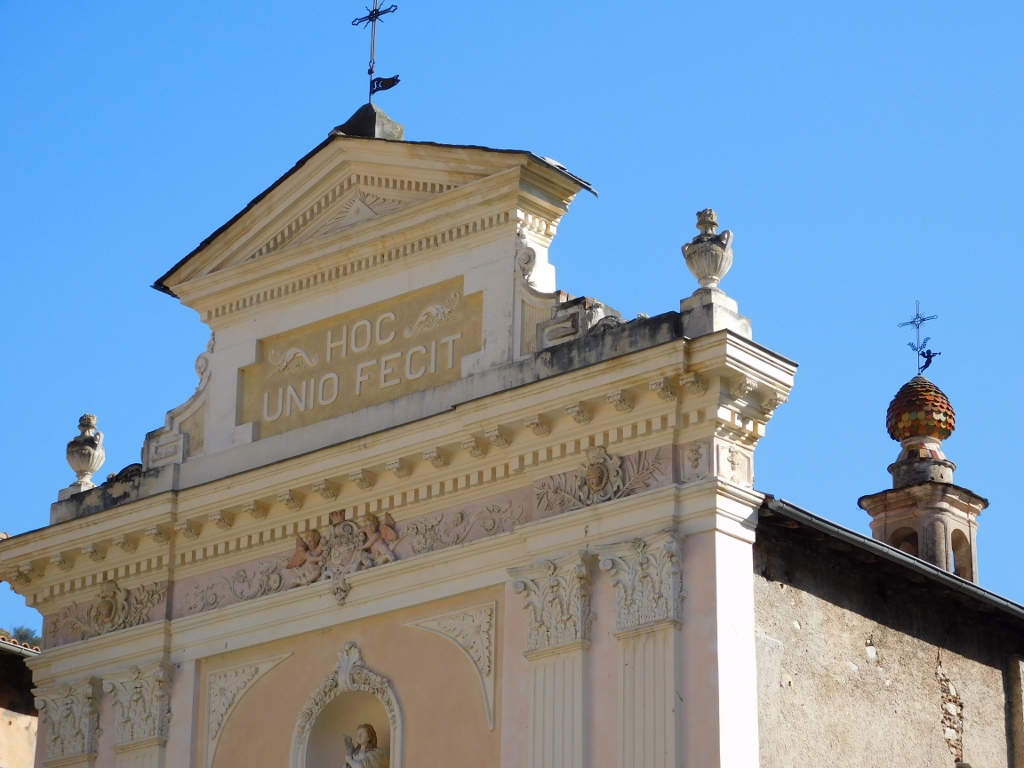 Saint Catherine Chapel, a detail
Saint Catherine Chapel, a detail
By now, it was already the time for me to head back to the train station where I was to wait for a train to Nice. When crossing the bridge over the Roya I saw a couple of mallards and a couple of swans. Some of them were in search of food on the bottom of the river.
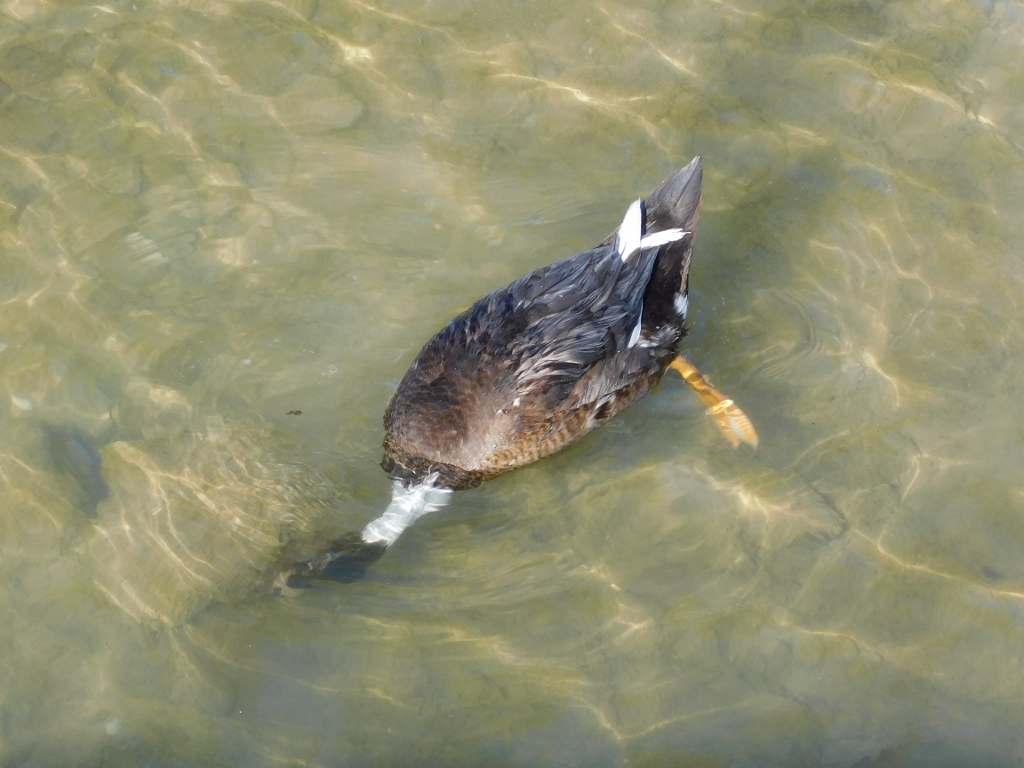 Searching for food on the bottom of the Roya
Searching for food on the bottom of the Roya
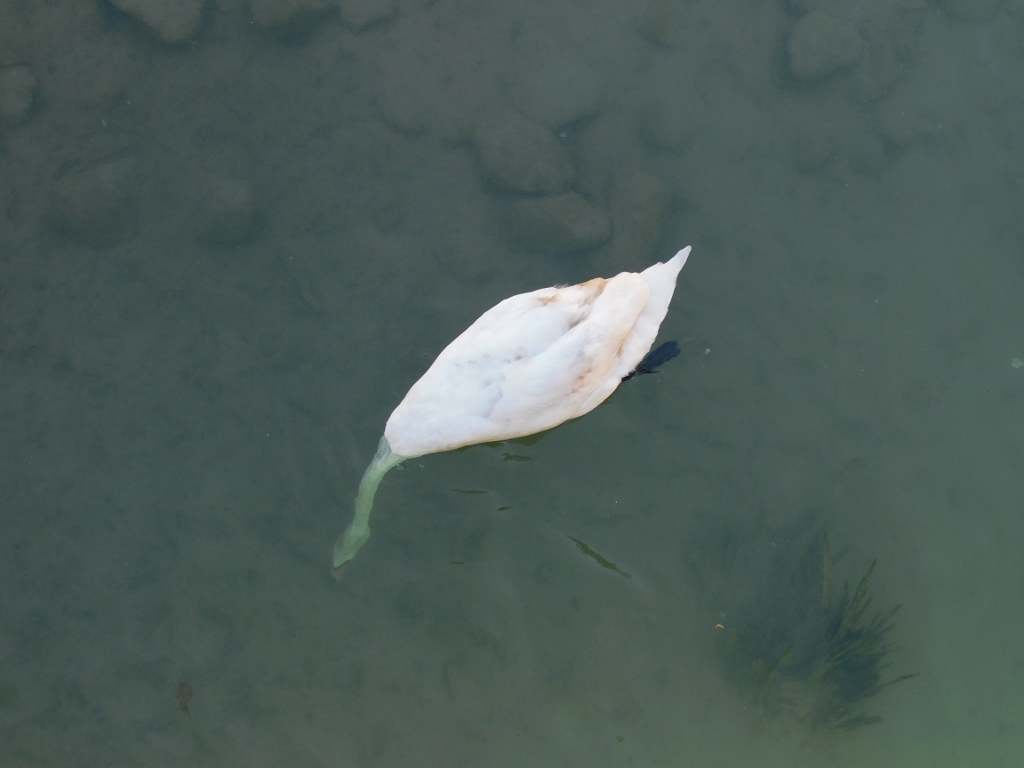 Searching for food on the bottom of the Roya
Searching for food on the bottom of the Roya
When I crossed the bridge, once again I had a look at the back side of Santa-Maria in Albis church, as well as the entire littoral of the town of Breil-sur-Roya. I enjoyed the fine view at this exceptionally lovely place.
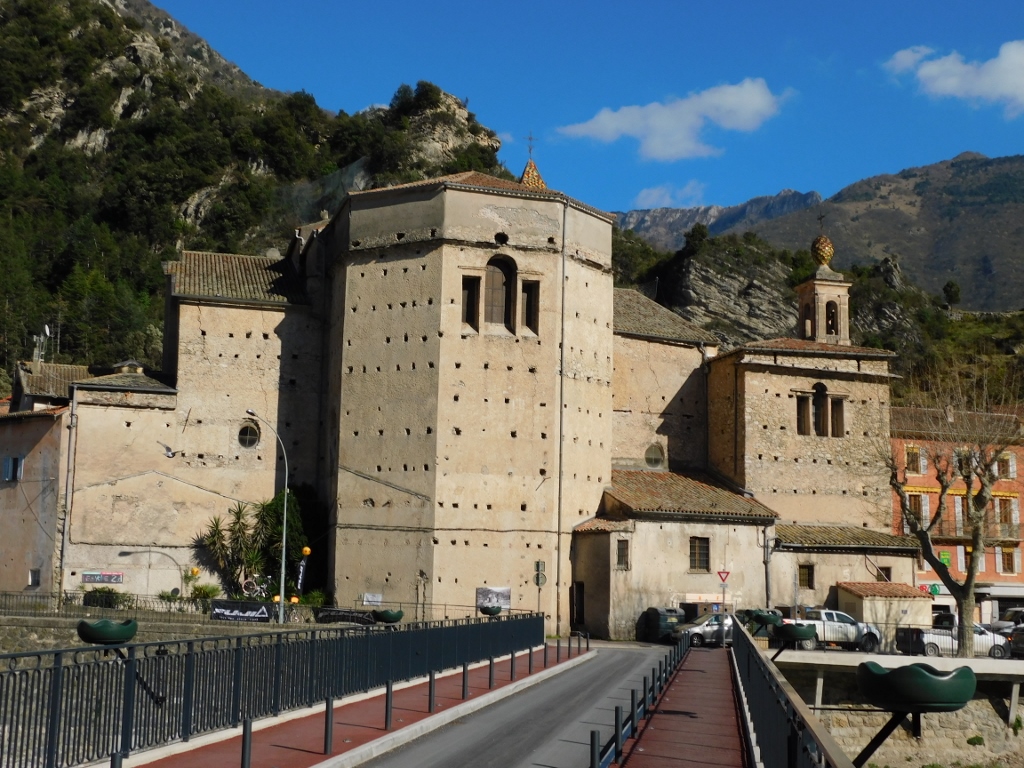 Santa-Maria in Albis church
Santa-Maria in Albis church
 Breil-sur-Roya
Breil-sur-Roya
The weather forecast for the following day said that it would be cloudy. I certainly did not want to hang around in Nice, but rather this time I headed west of Nice and concretely went to Cannes. On my way to the train station I had already noted a building that looked pretty impressive to me. This was the Post Office building (Hôtel des Postes) from 1931 and, as I would find out later on, this is the only building in Nice entirely made out of bricks, since this material is normally not used in this region. The story about it suggests that the design was in fact intended for a town in the north of France, but it somehow ended up here. That is actually not true, but it does sound interesting. In any case, the building is considered a historical heritage linked to the 20th century.
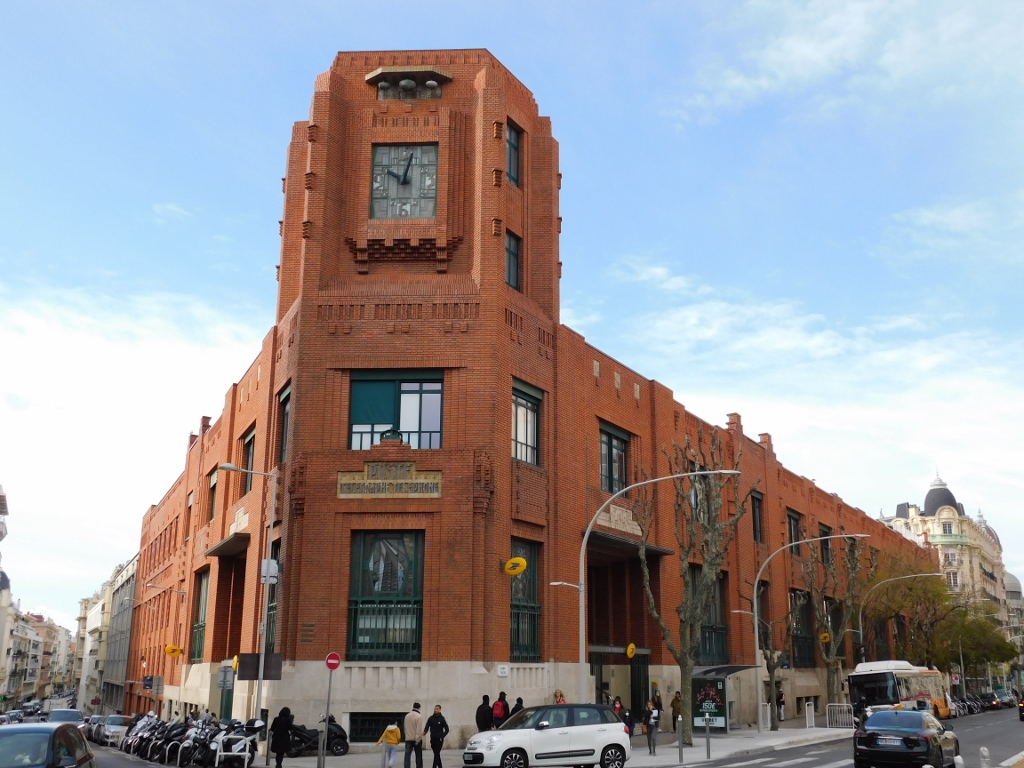 Post Office building close to the train station in Nice
Post Office building close to the train station in Nice
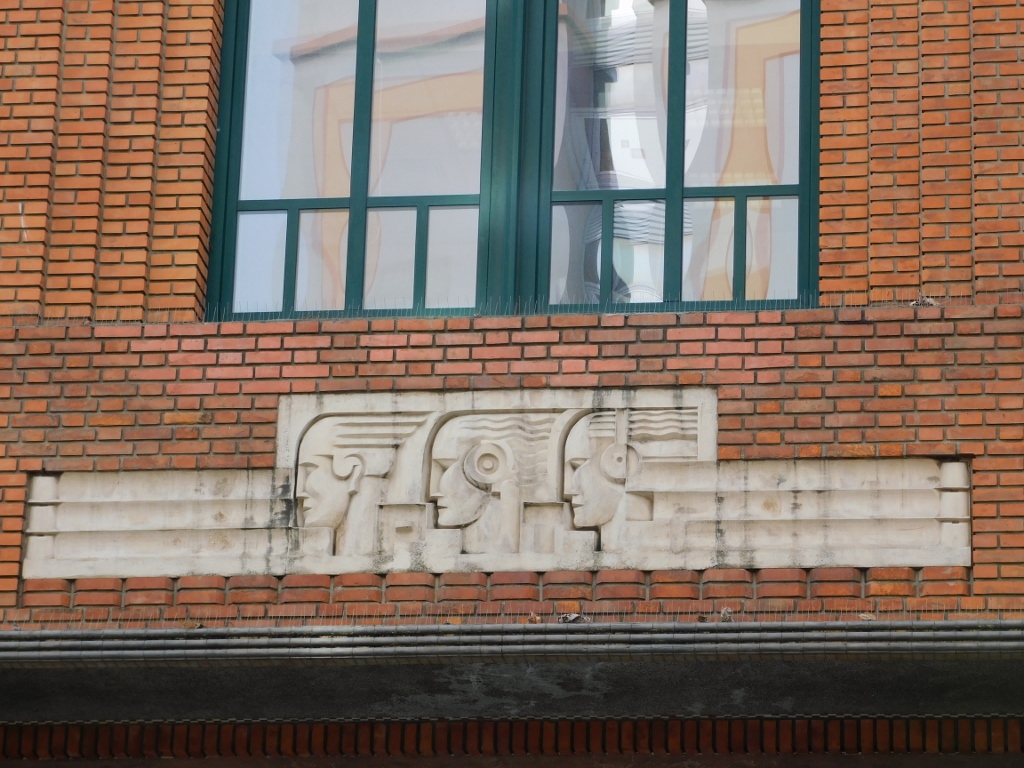 Post Office building close to the train station in Nice, a detail
Post Office building close to the train station in Nice, a detail
The train ride from Nice to Cannes was very interesting since the train often runs very near some beaches, but the beginning of April was certainly not a part of the swimming season and so the beaches were mostly deserted.
Many years ago, I was very briefly in Cannes when I was returning by coach from Barcelona with my brother and a tourist group we were a part of. At that time, we were given a few hours here and I remember that my brother and I walked along the famous Promenade de la Croisette, which is a promenade and a boulevard that runs parallel to the main beach in town, and I know that we had some juice at one of the cafés here. But, frankly speaking, I don’t remember much more.
This time, I went from the train station directly towards the Old Port and I must admit that on this occasion I did not like the town at all. The main reason was the incredible quantity of noise. Some streets were being renovated and there was a lot of drilling and machine work, but even when these were absent, it all seemed unattractively crowded.
At some point I was delighted to come across the Church of Our Lady of Good Voyage (Notre Dame de Bon Voyage). This is a church from the 19th century and it was certainly a place where I had to stop by.
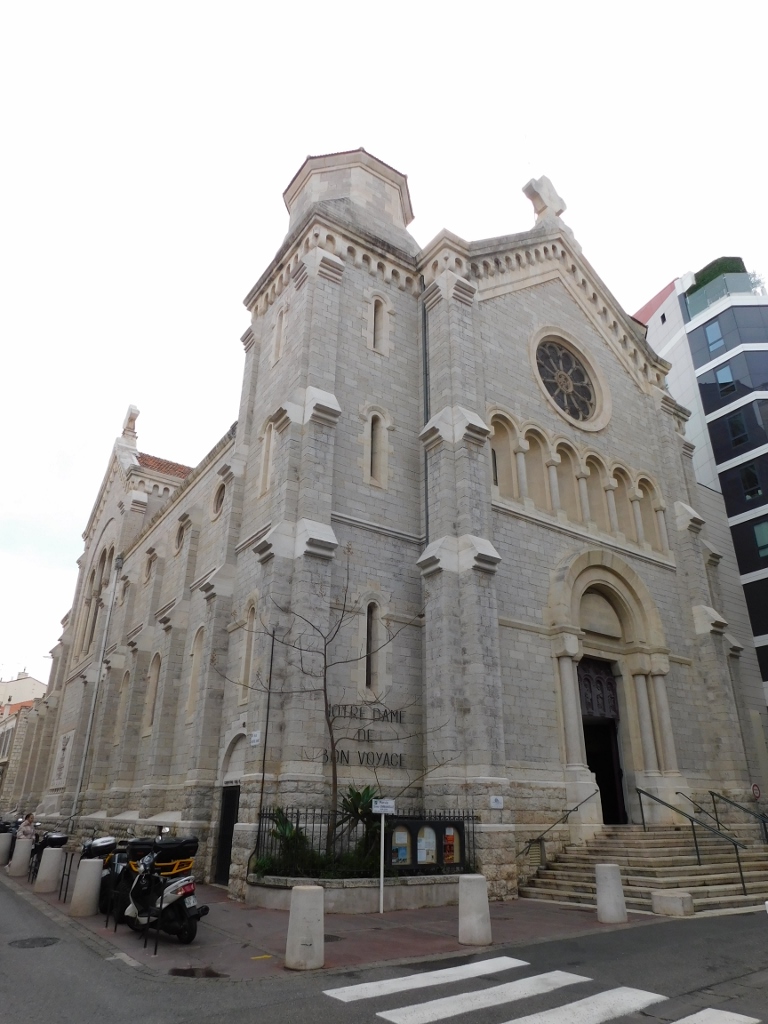 Church of Our Lady of Good Voyage
Church of Our Lady of Good Voyage
The church has very nice stained-glass windows, a large quantity of natural lighting, as well as interesting organs.
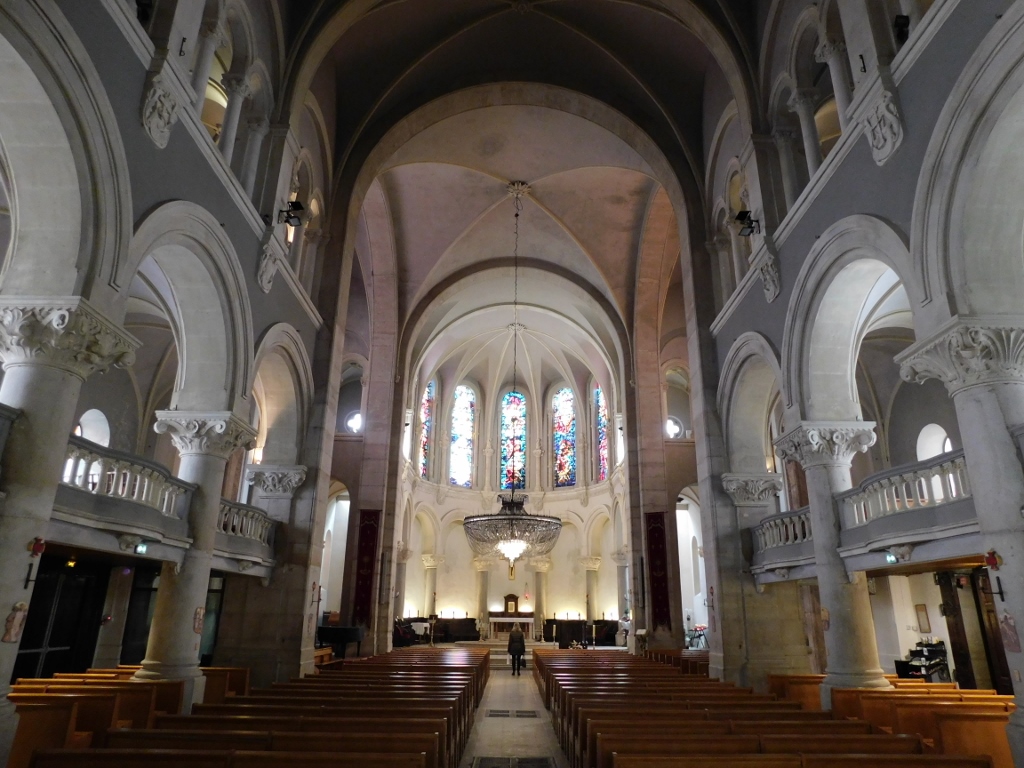 Church of Our Lady of Good Voyage
Church of Our Lady of Good Voyage
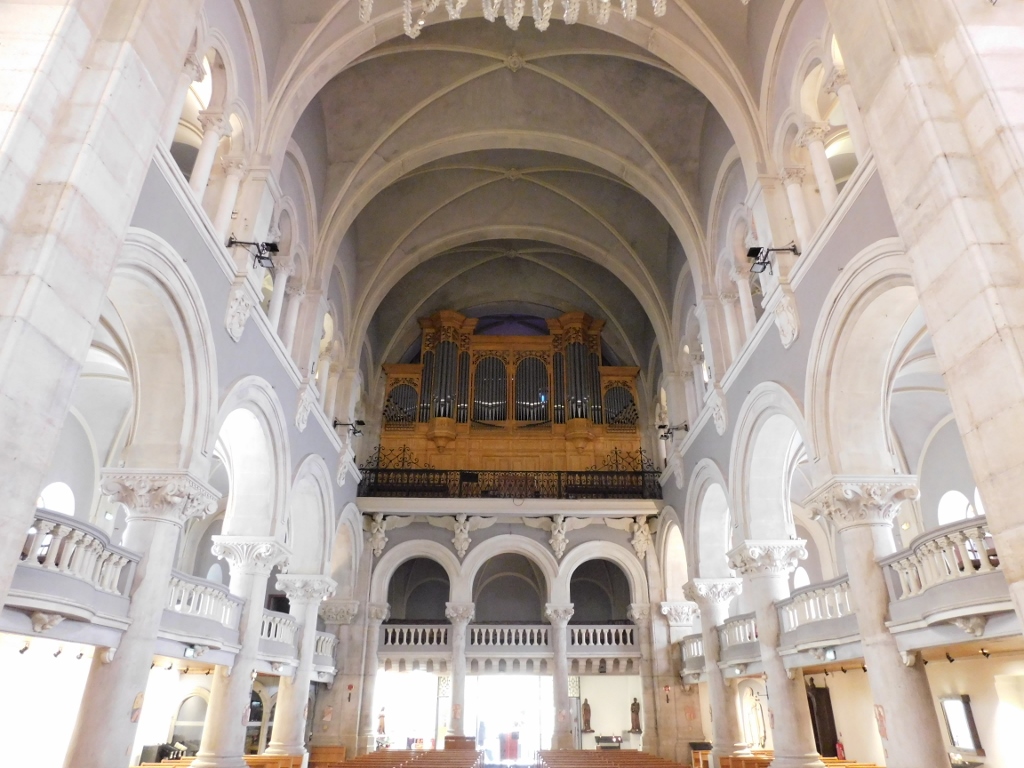 Church of Our Lady of Good Voyage
Church of Our Lady of Good Voyage
But, let me say a few words about Cannes. This place has first become popular thanks to its nice position and mild climate, but nowadays it is famous mostly thanks to numerous festivals. Still, the rise of Cannes from an ordinary fishing village to a desirable holiday destination among the wealthy of the Western Europe started exactly in 1834. Namely, in this year, a British lord sailed by a ship to Italy, but because of a cholera epidemic he had to make a stop at the then fishing village of Cannes. He liked the picturesque nature in this part of the coast so much that he started to come here every winter, buying a tract of land. It was precisely with him that the development of the entire French Riviera started, for all the aristocrats and people with money wanted to follow the example of the influential Lord Brougham.
Even today, Cannes is the meeting point of rich people, but these have been joined in the meantime by different famous stars and individuals who enjoy the “celebrity” status and who are, by the rule, also rich. We could put it as like rejoices in like.
Who earns should also spend and so there are casinos along the entire French Riviera, including also in Cannes, in the direct proximity of the Old Port and practically within the same block where there is the Palace of Festivals and Conferences (Palais des Festivals et des Congrès) which I will talk about more later on.
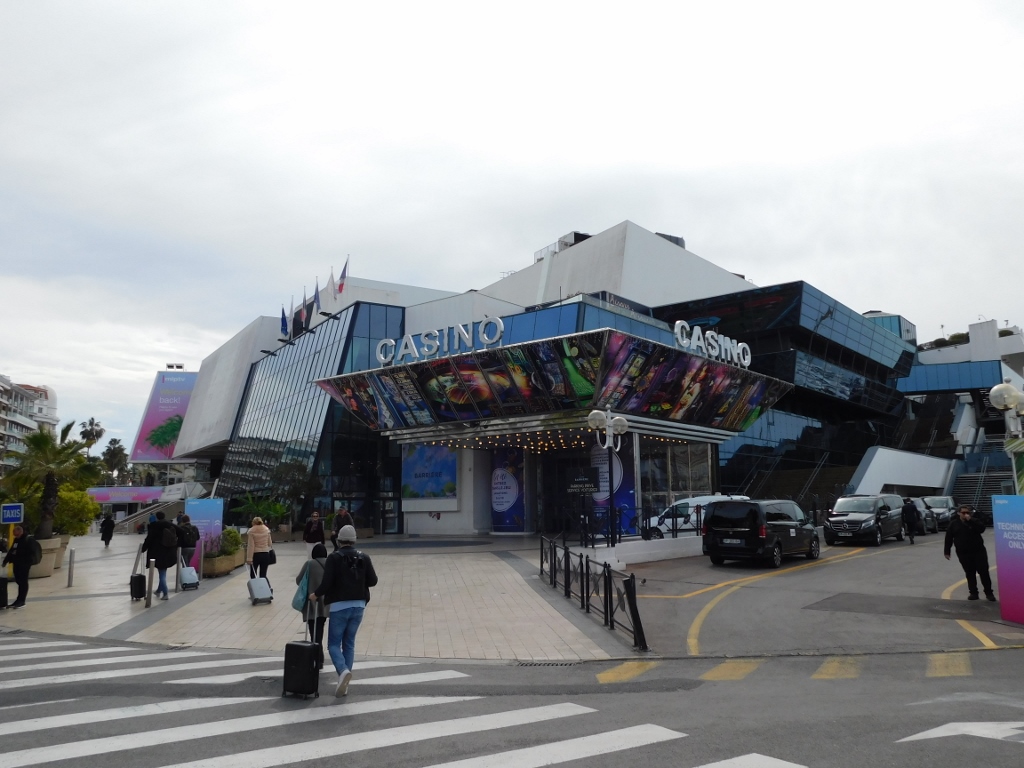 Casino in Cannes
Casino in Cannes
A little farther I walked past the Town Hall built in 1876.
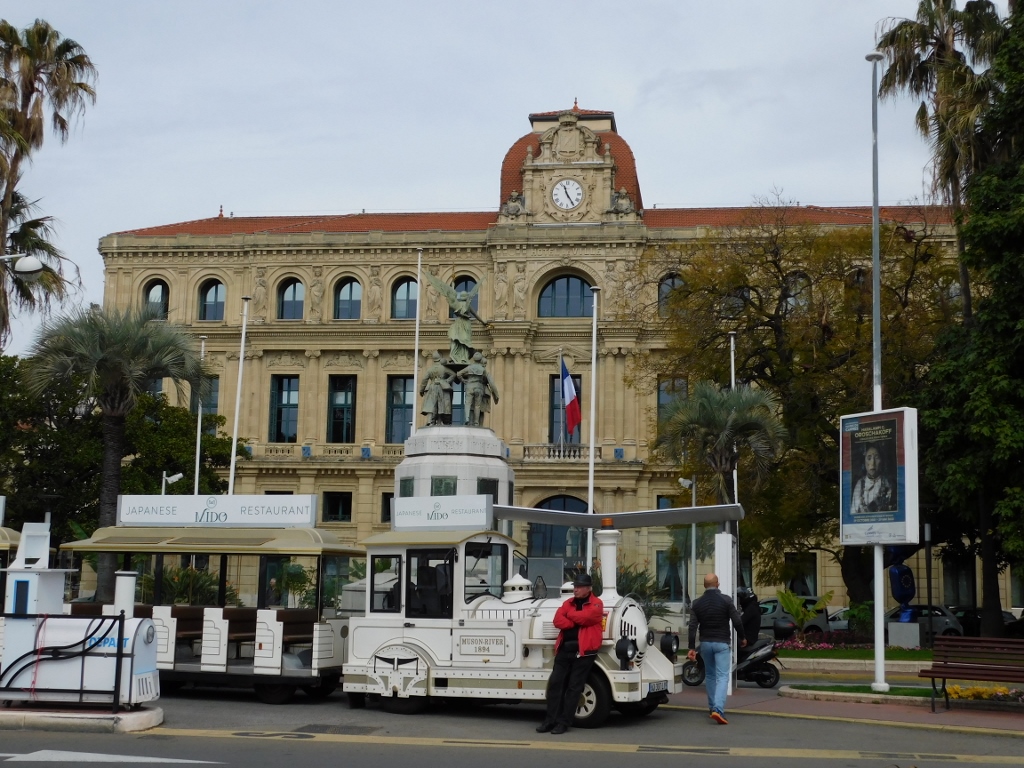 Town Hall
Town Hall
Strolling by the port, I could see in front of me Le Suquet where the old town in Cannes is located. The most striking structures are the Suquet Tower that is a remnant of a fortification built at this site in the 11th century and the tower of the Church of Our Lady of Hope (Notre-Dame-d’Espérance) from the 16th century.
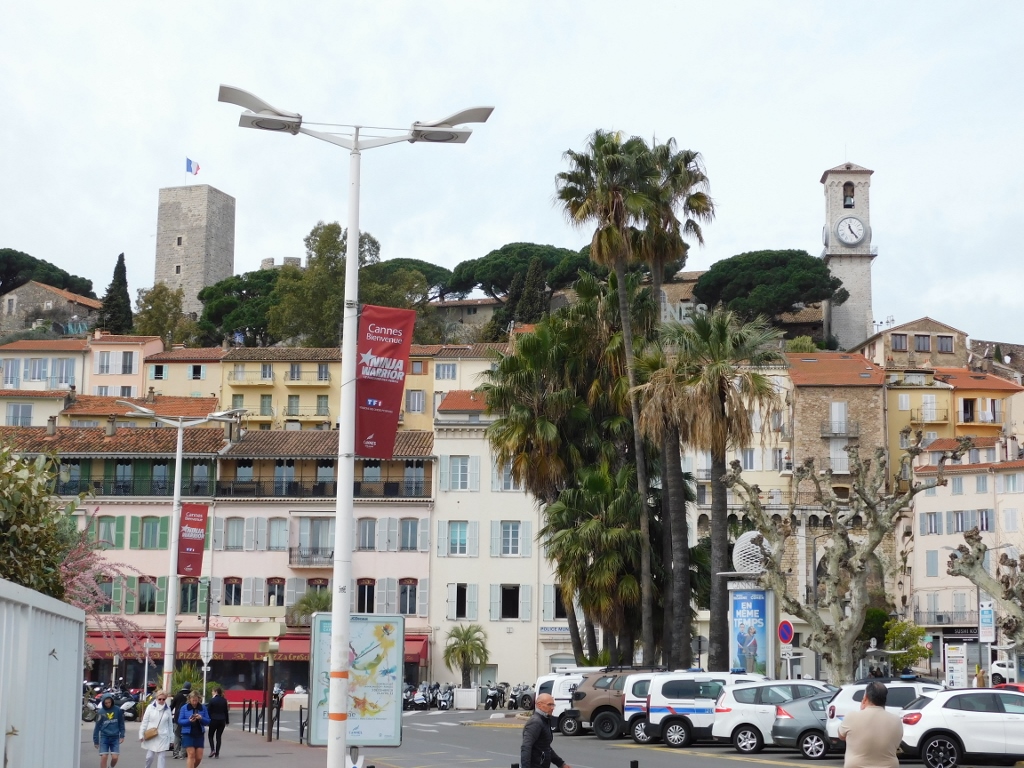 Le Suquet hillock
Le Suquet hillock
However, my plan was not to visit the old part of Cannes at all, but instead I went straight to the port and soon I was on a boat ready for a short trip. Even before the boat departed, I could enjoy in the fine view at Cannes and some of its famous hotels.
 View at Cannes
View at Cannes
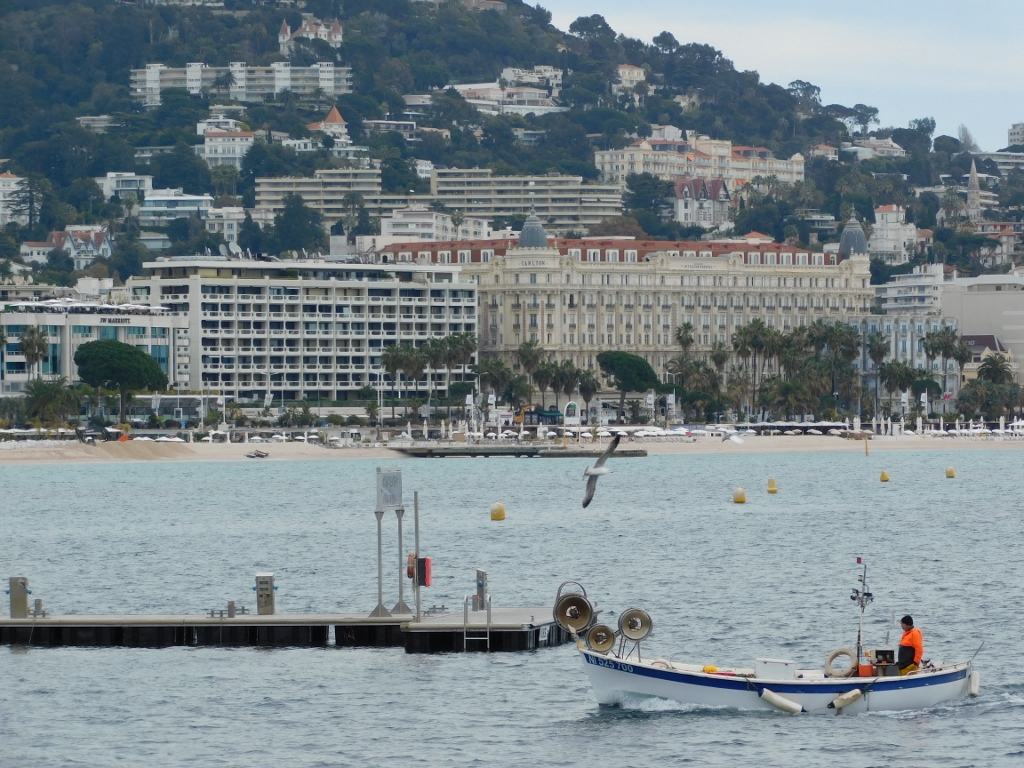 View at the beach of Cannes and some of the famous hotels
View at the beach of Cannes and some of the famous hotels